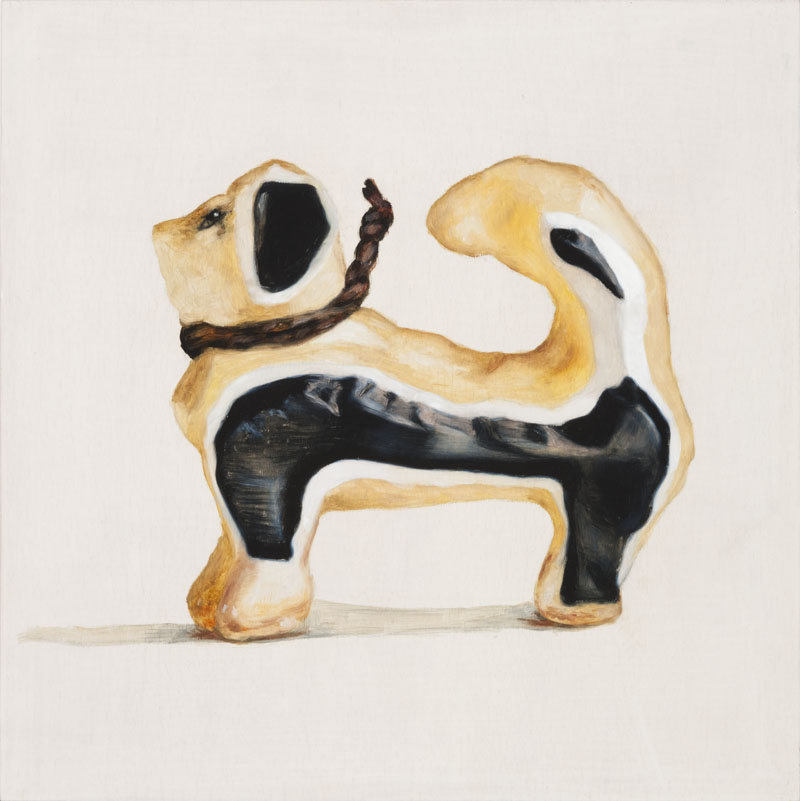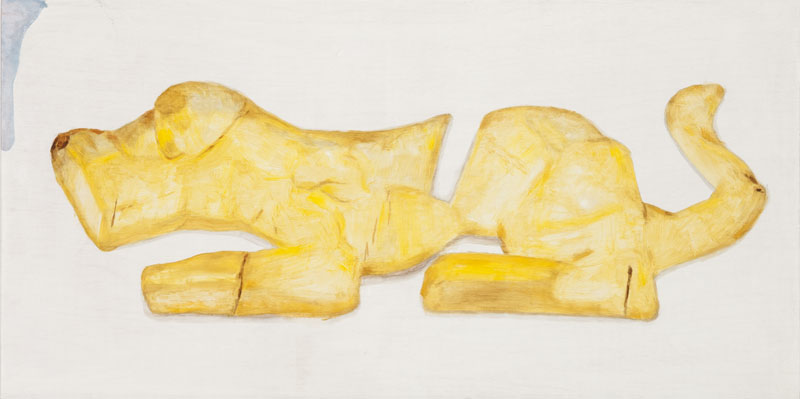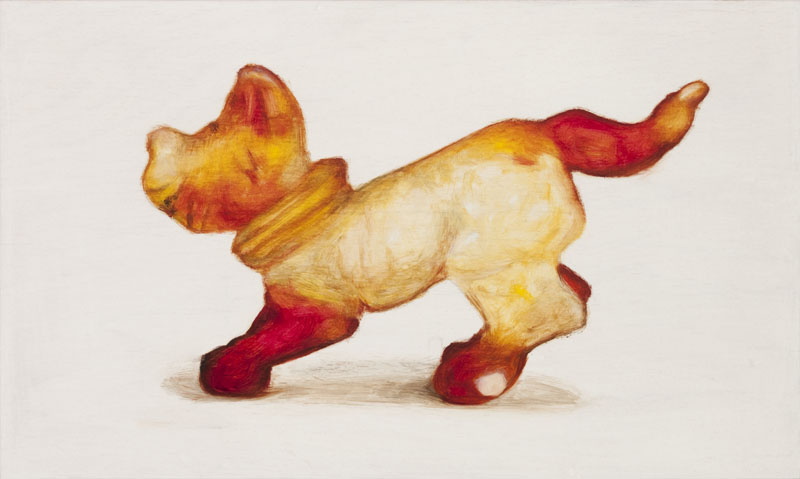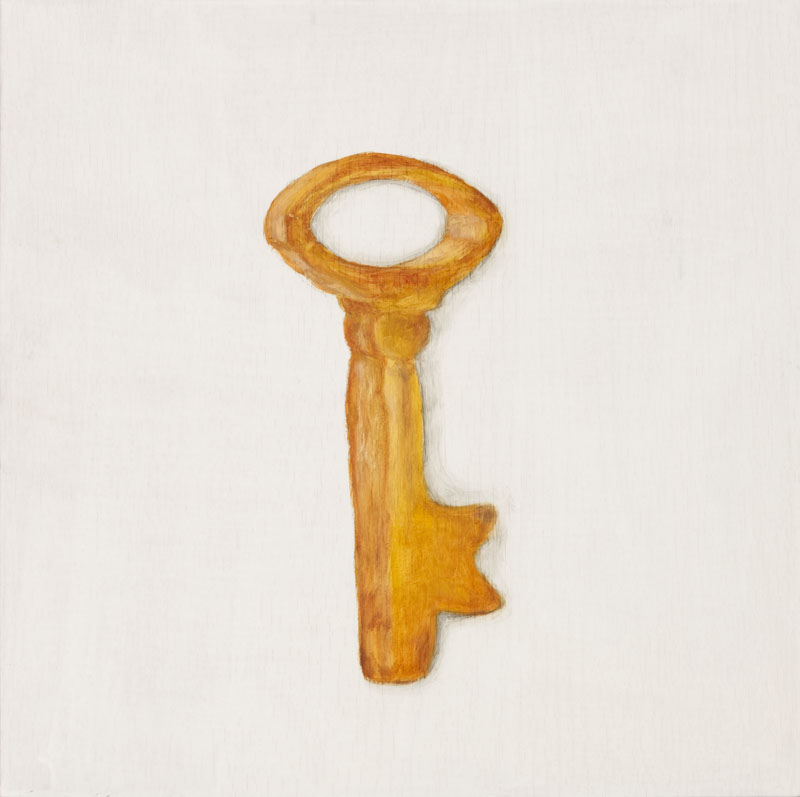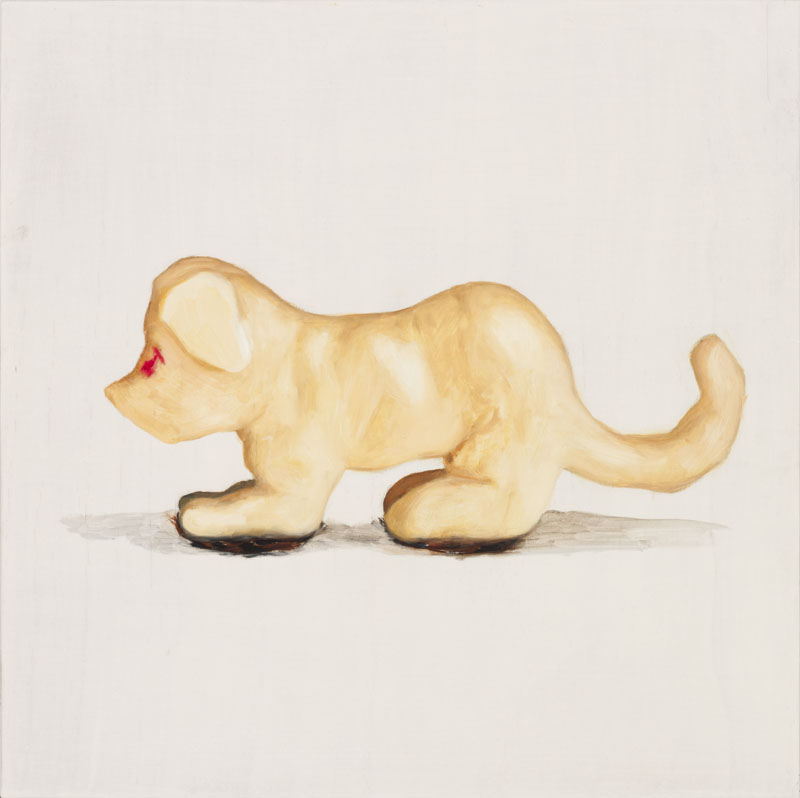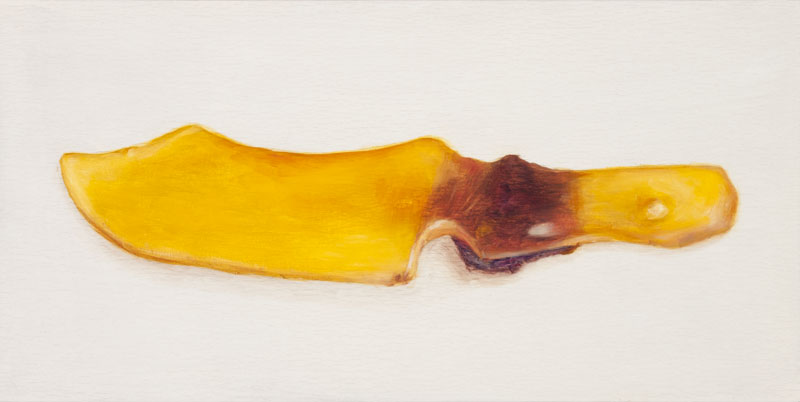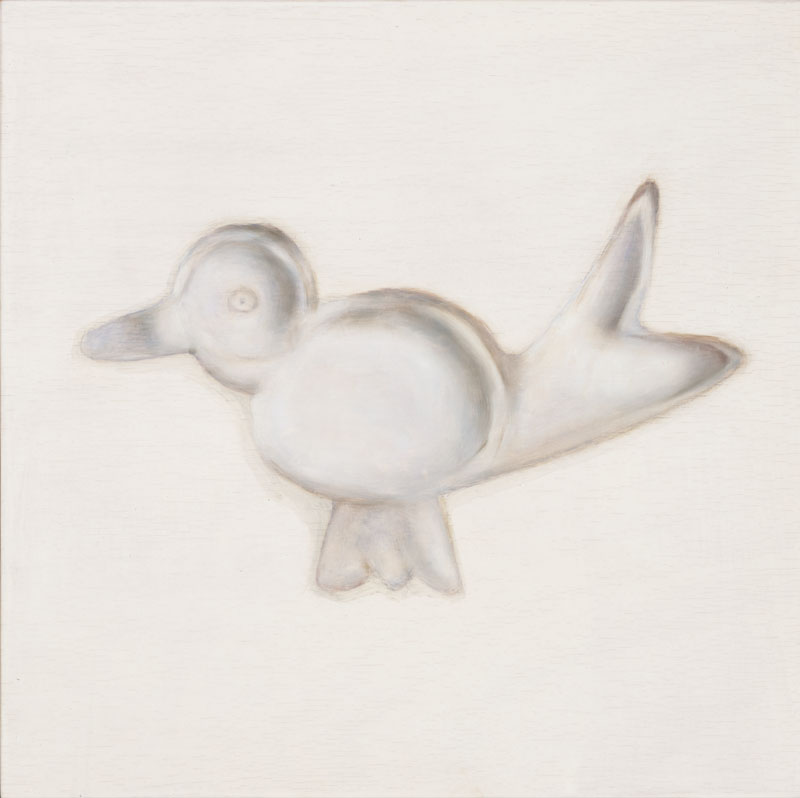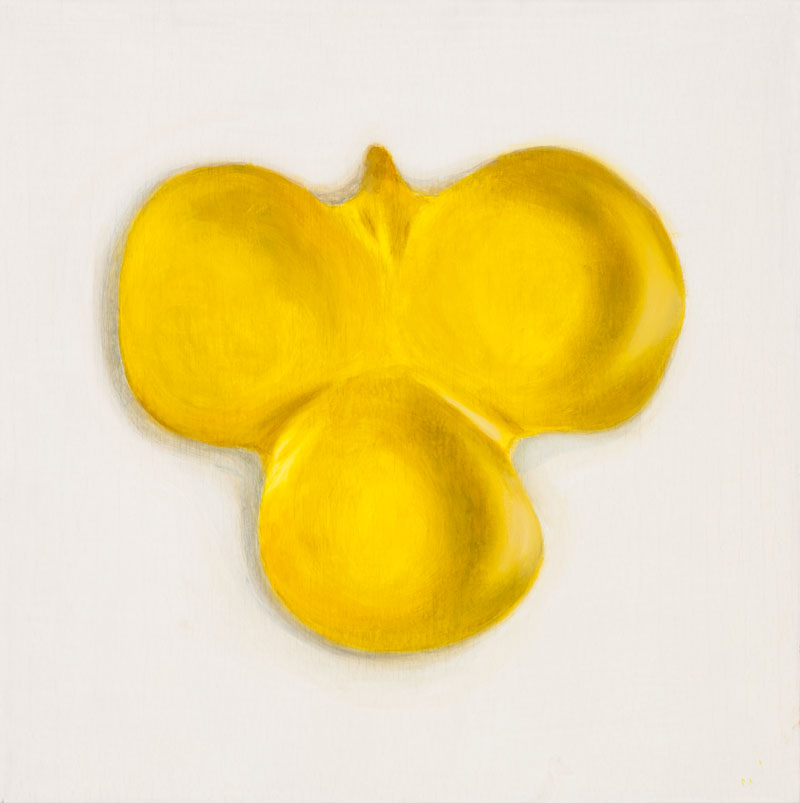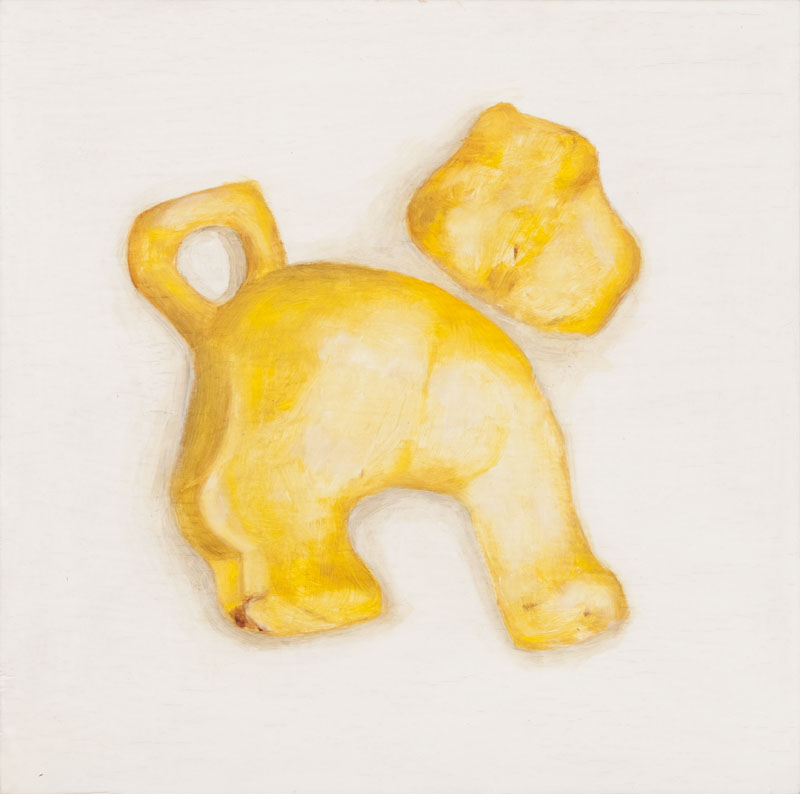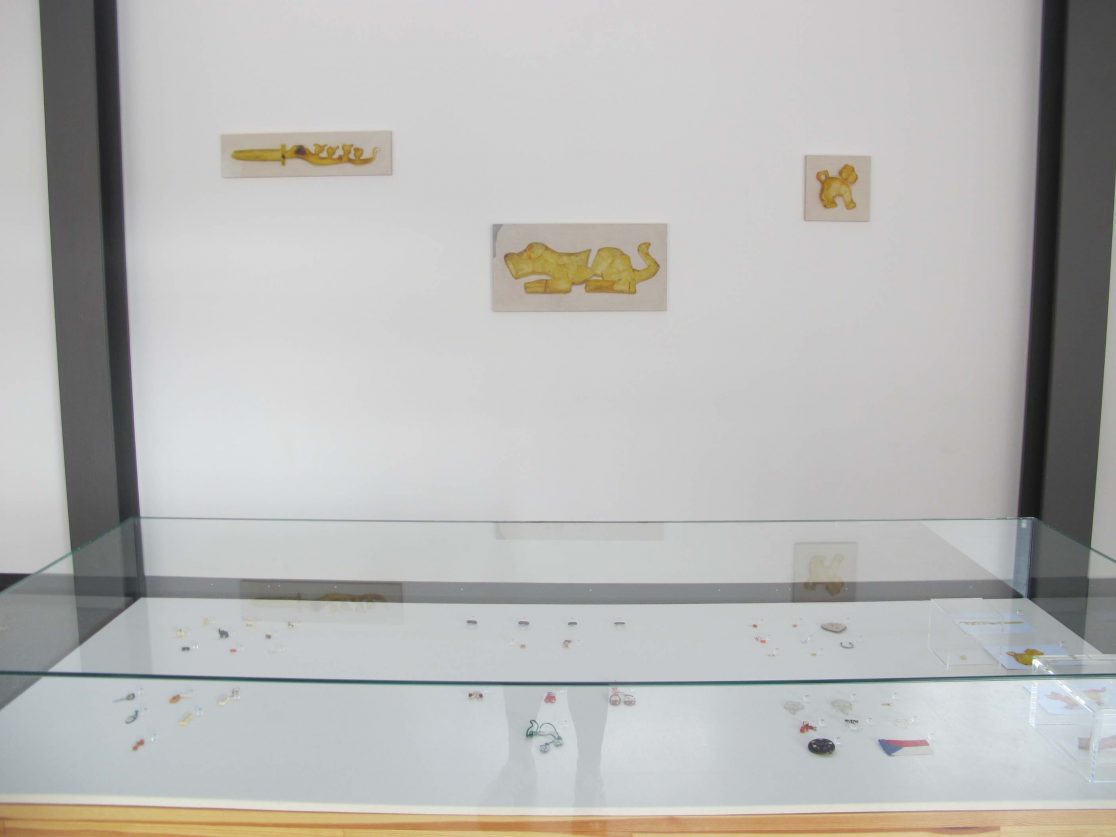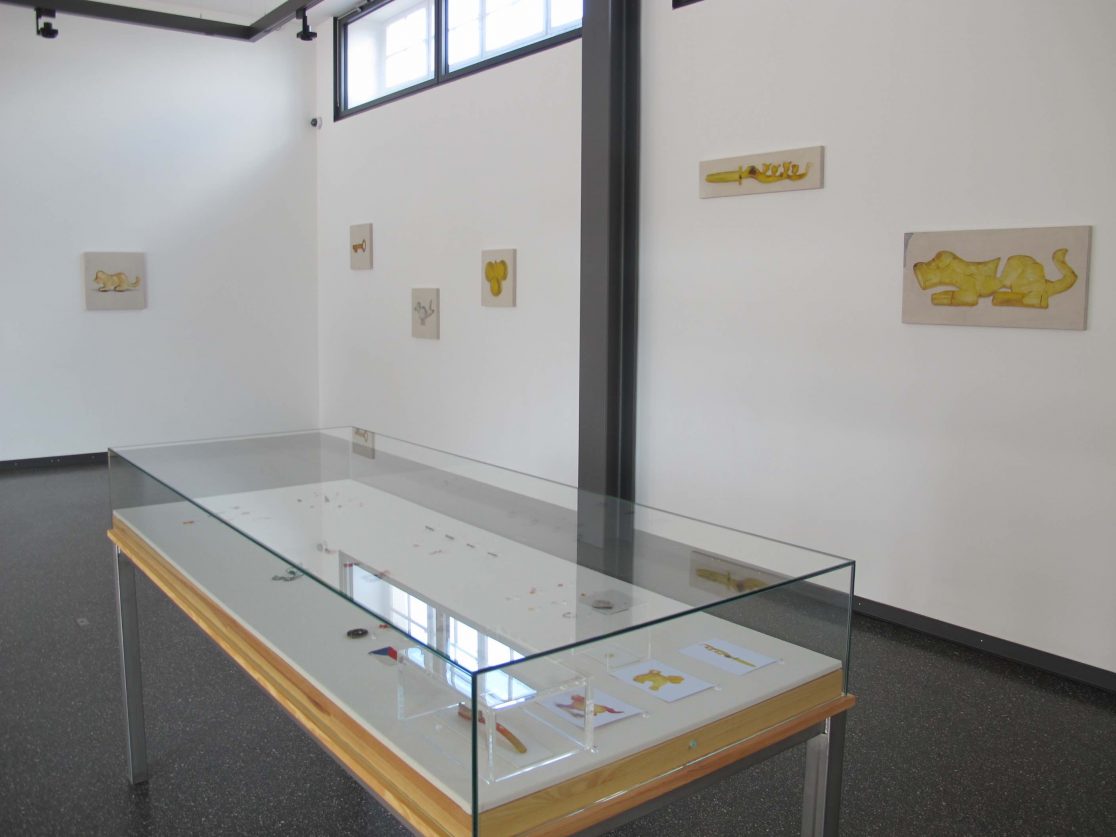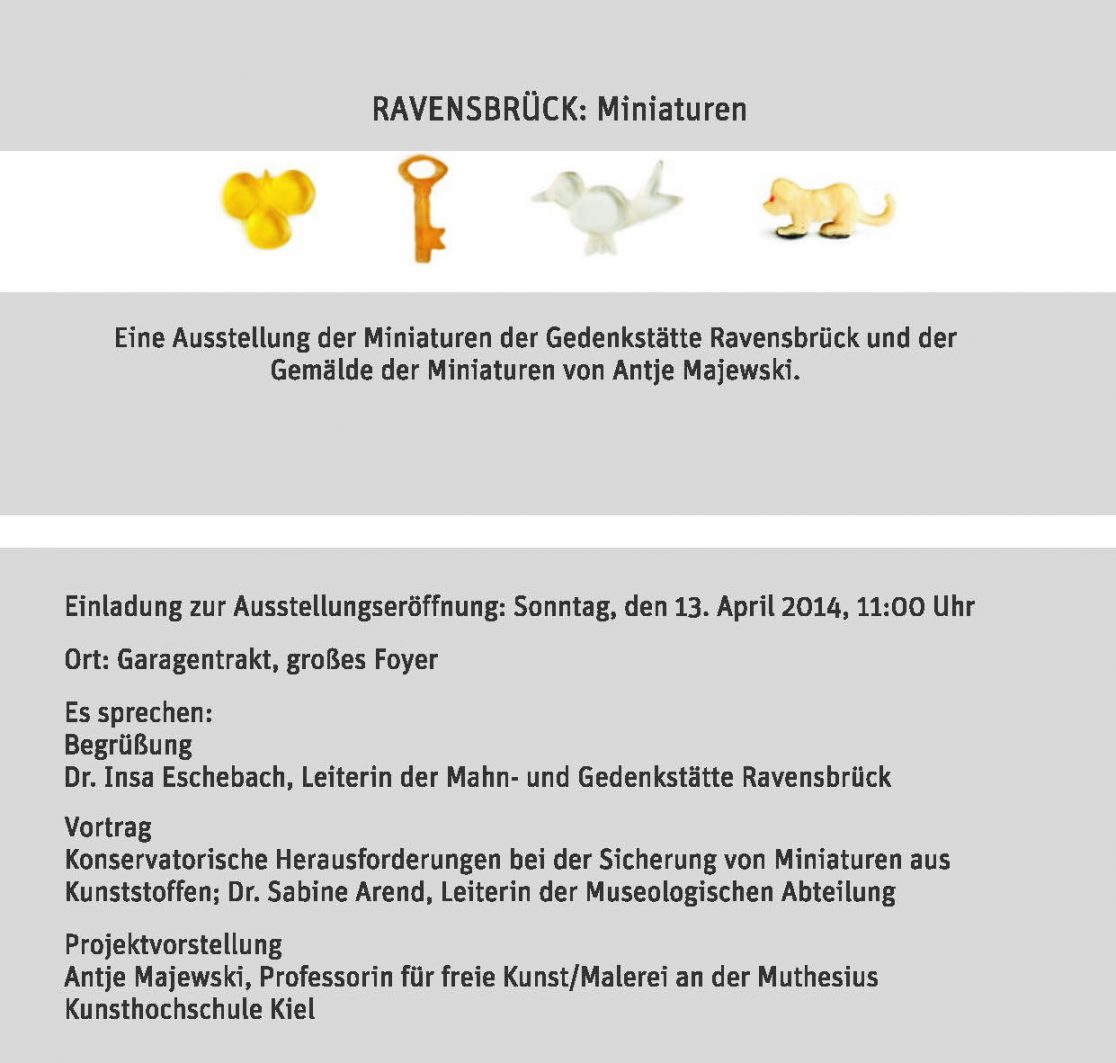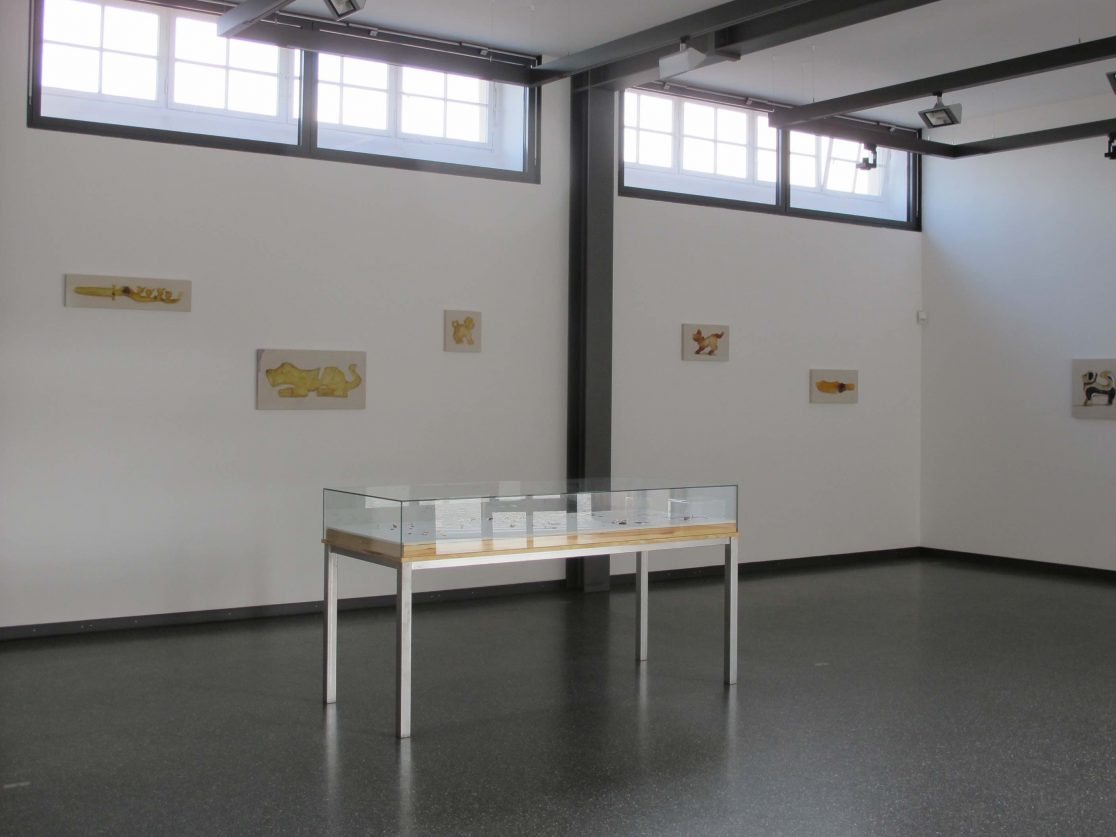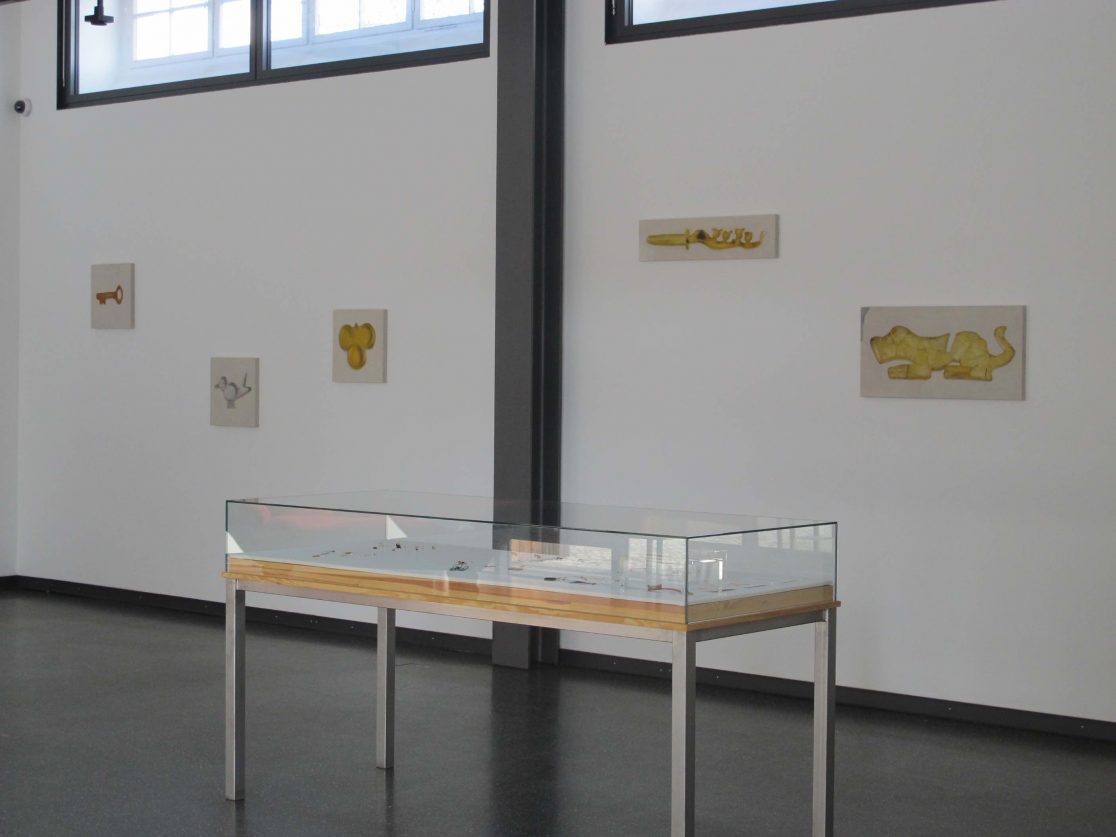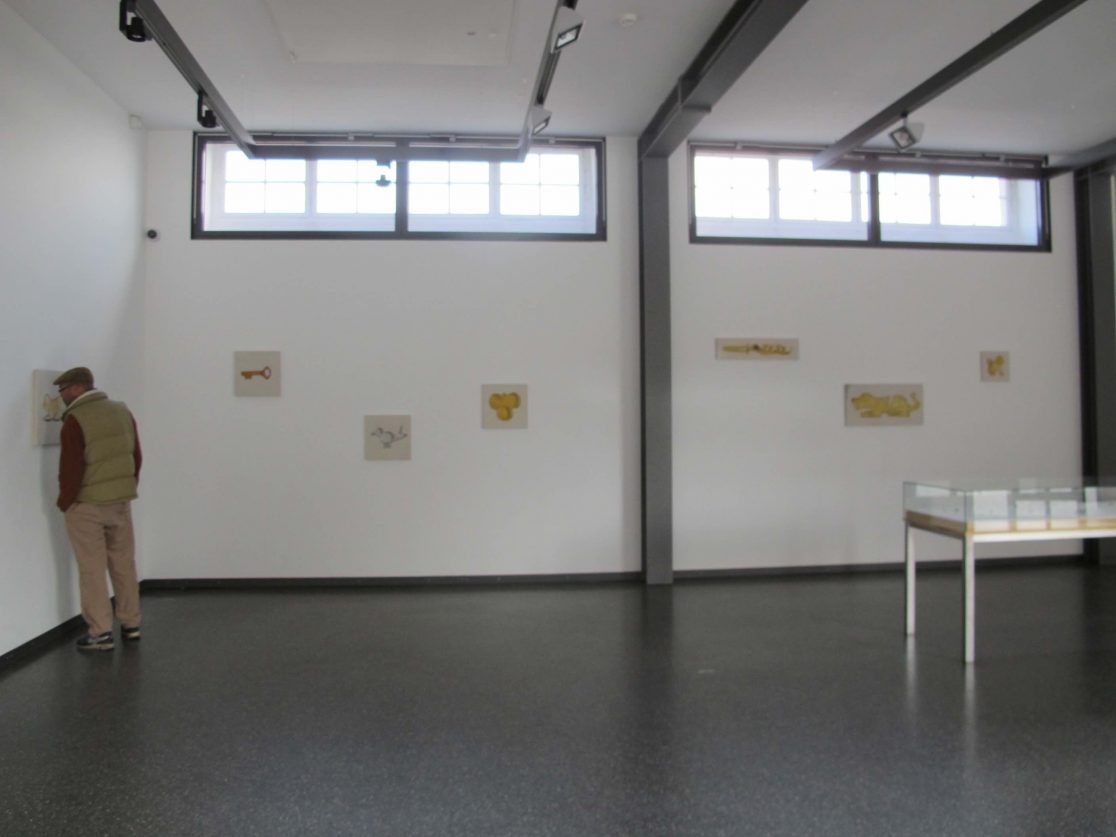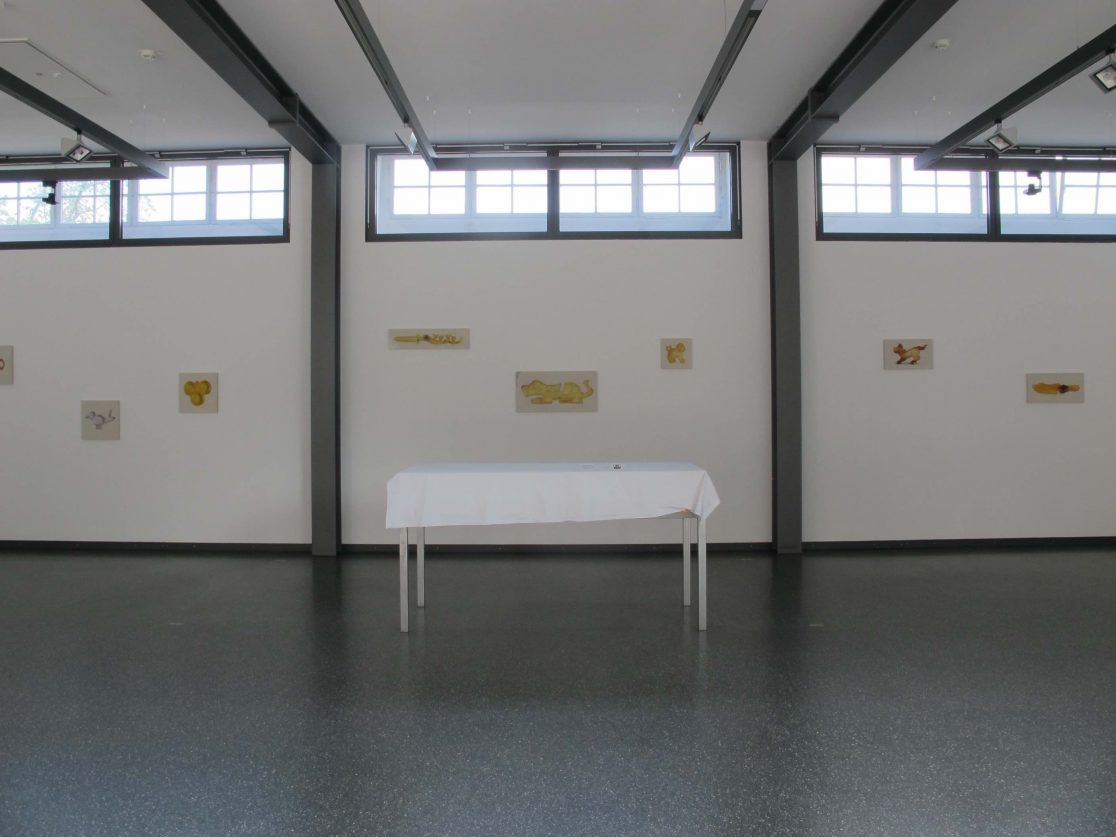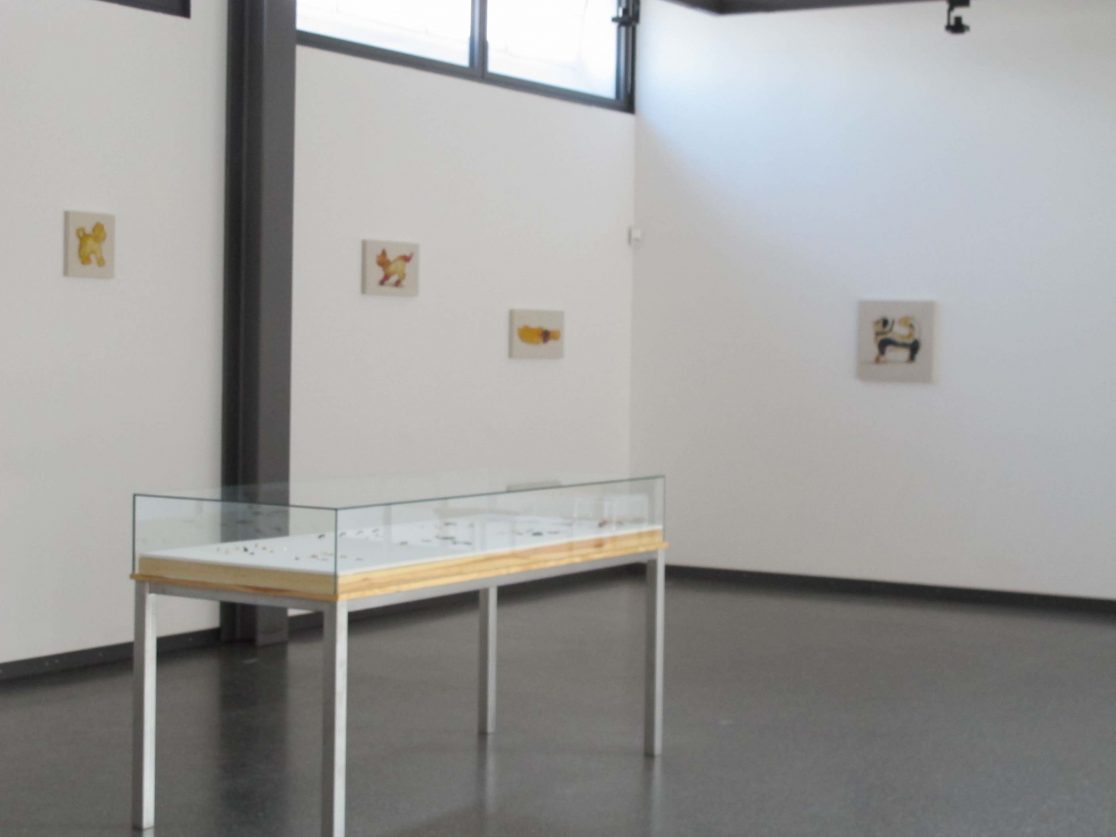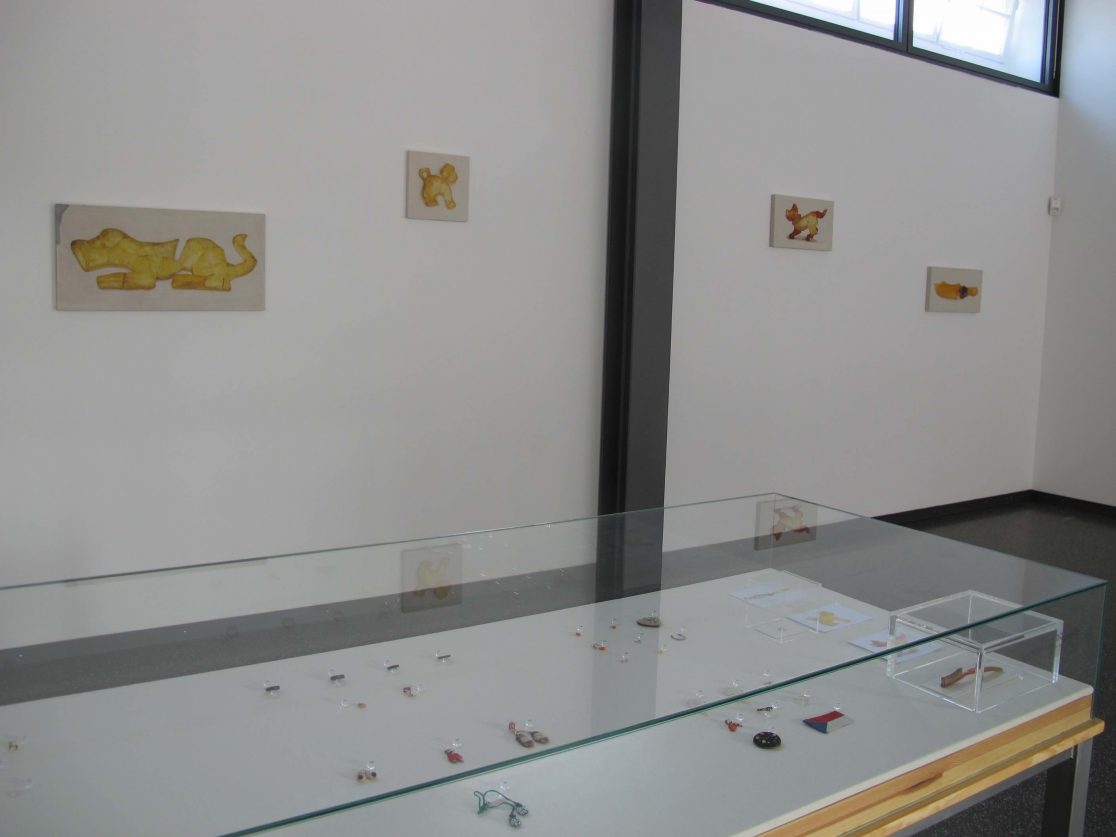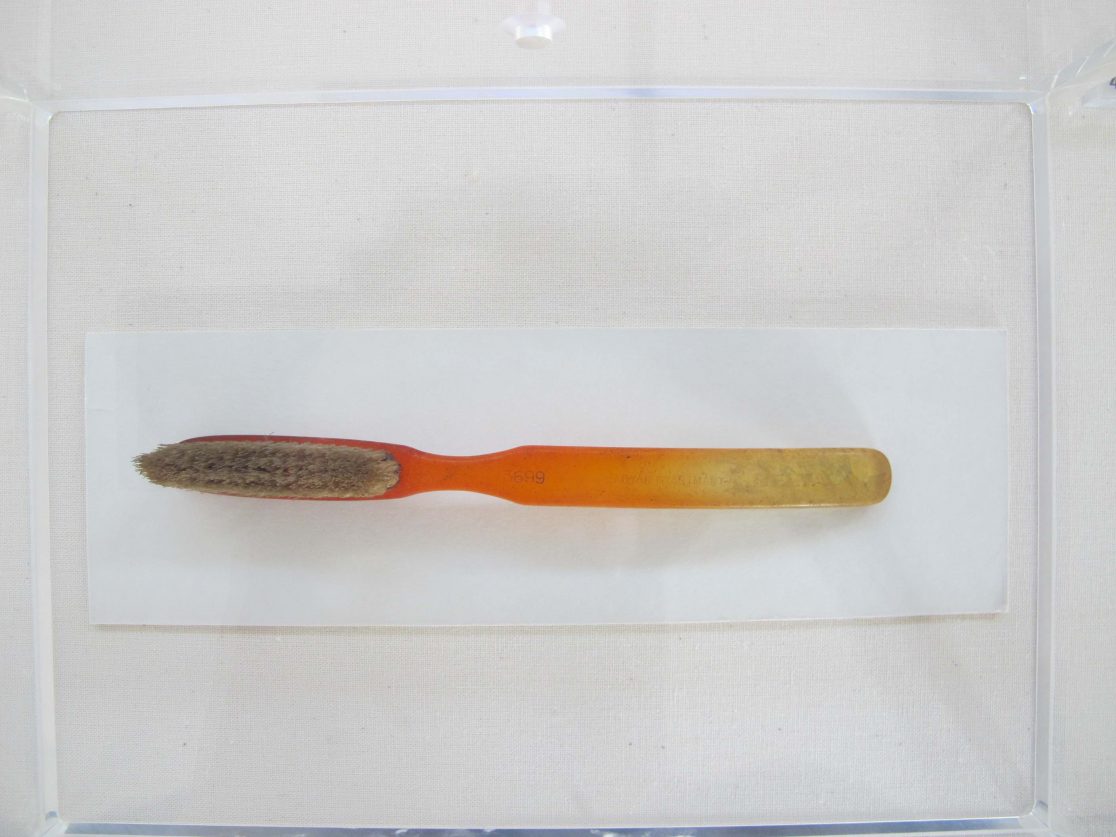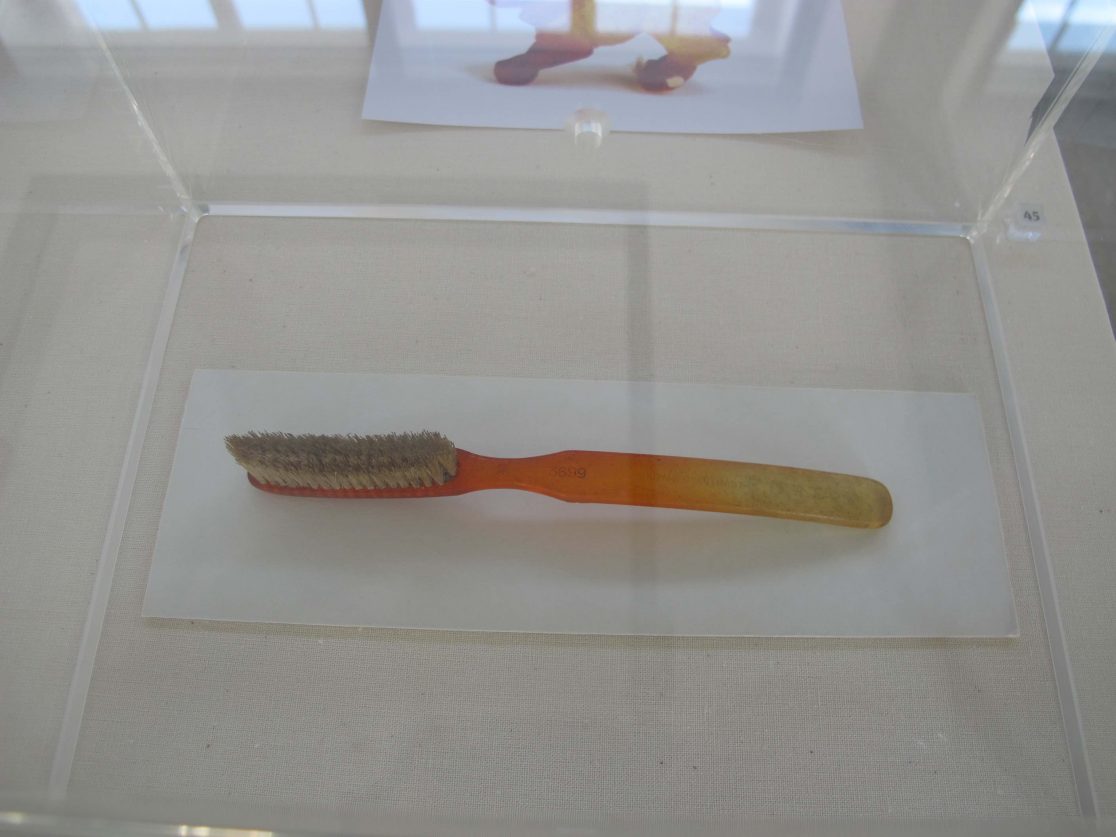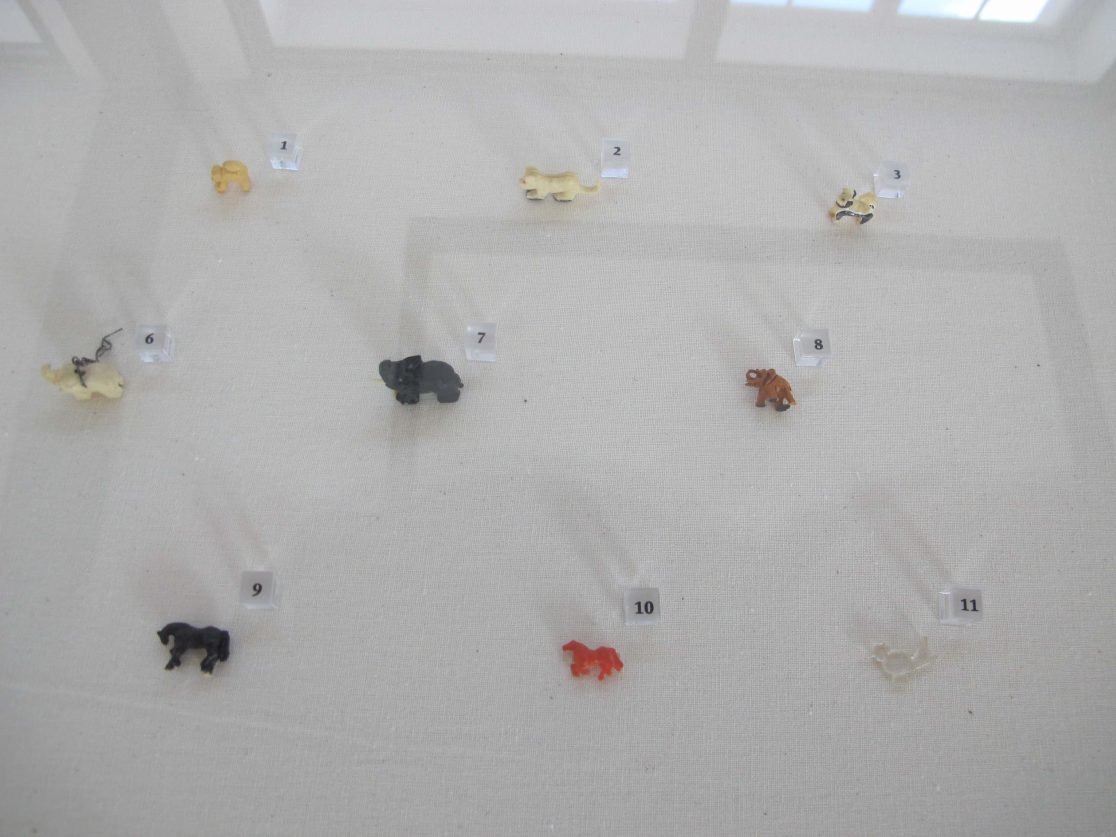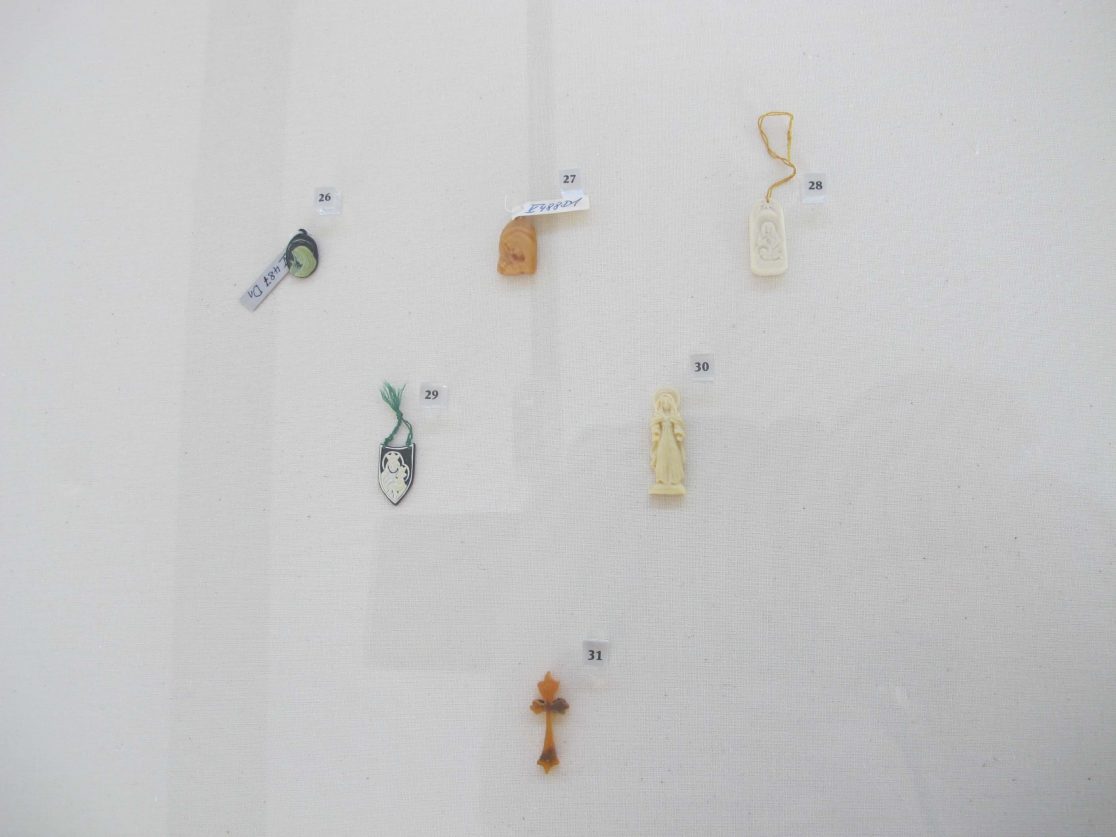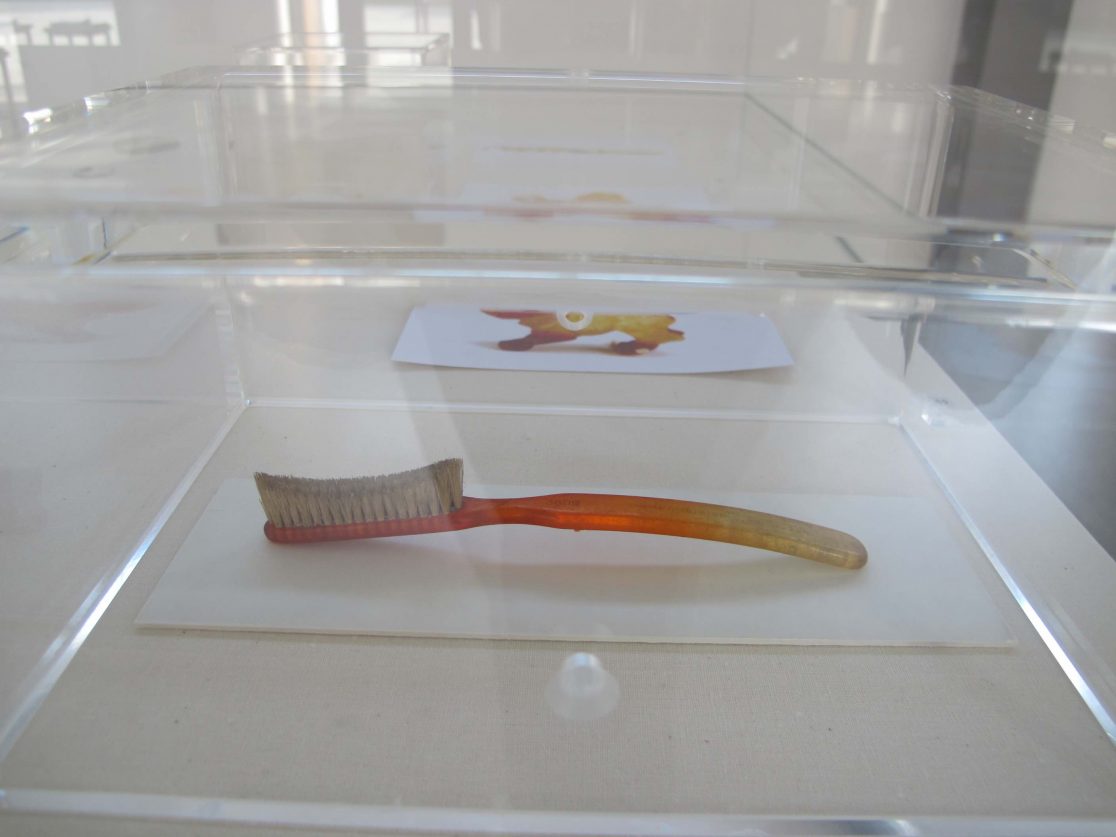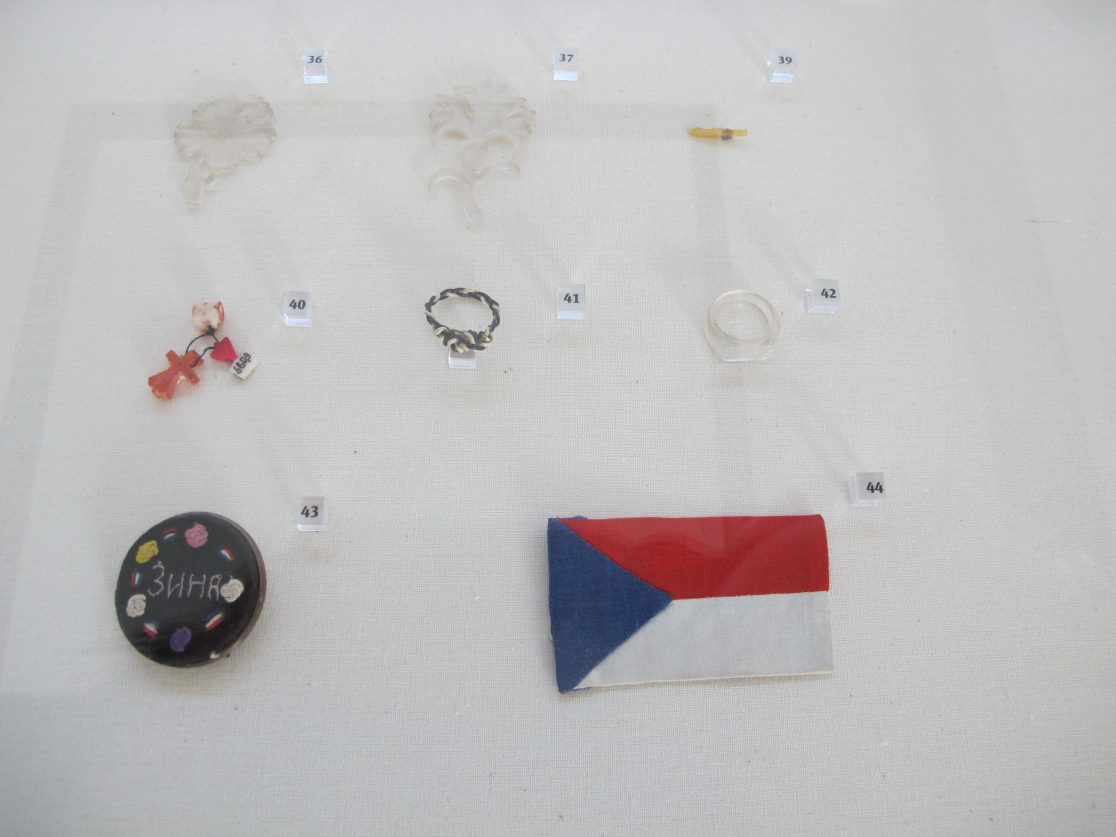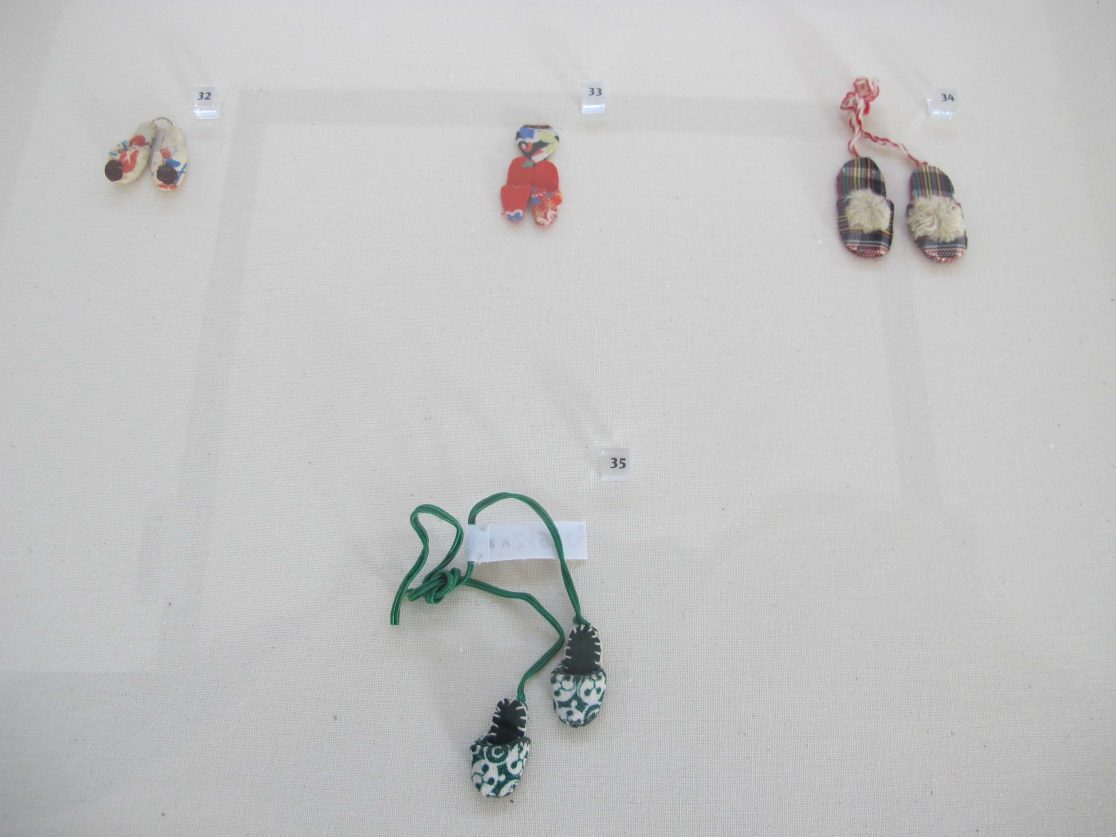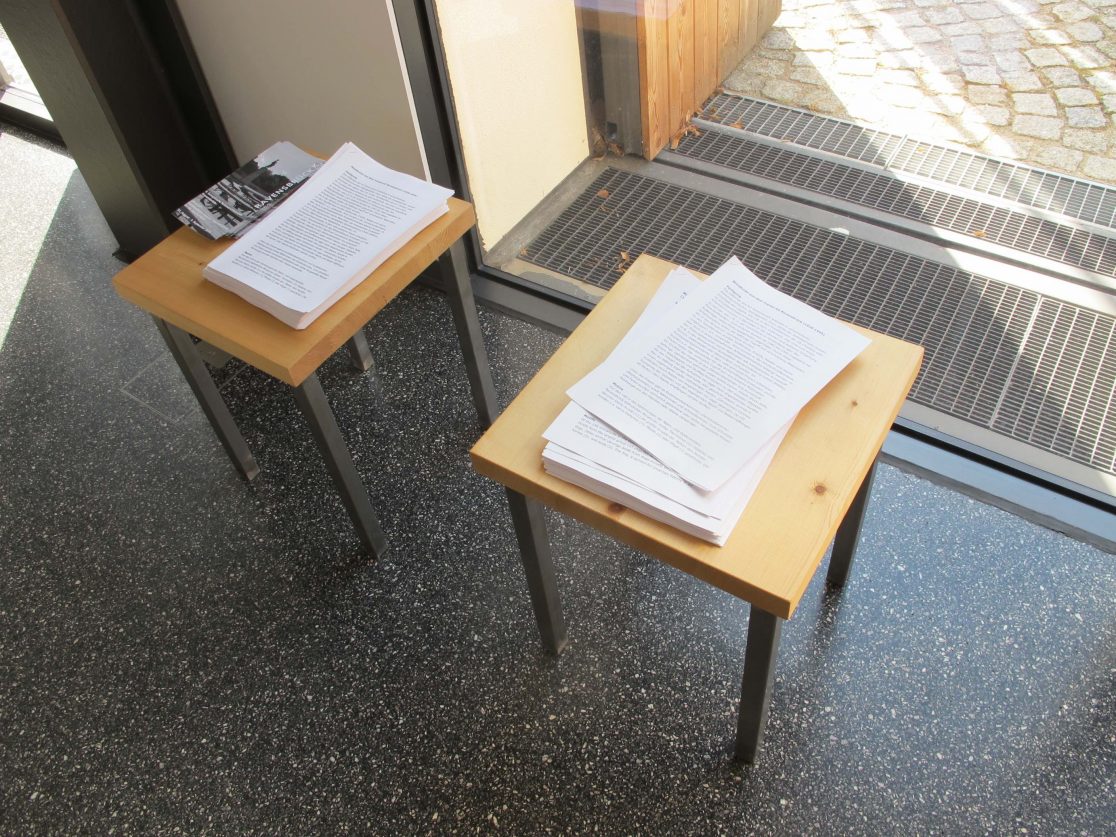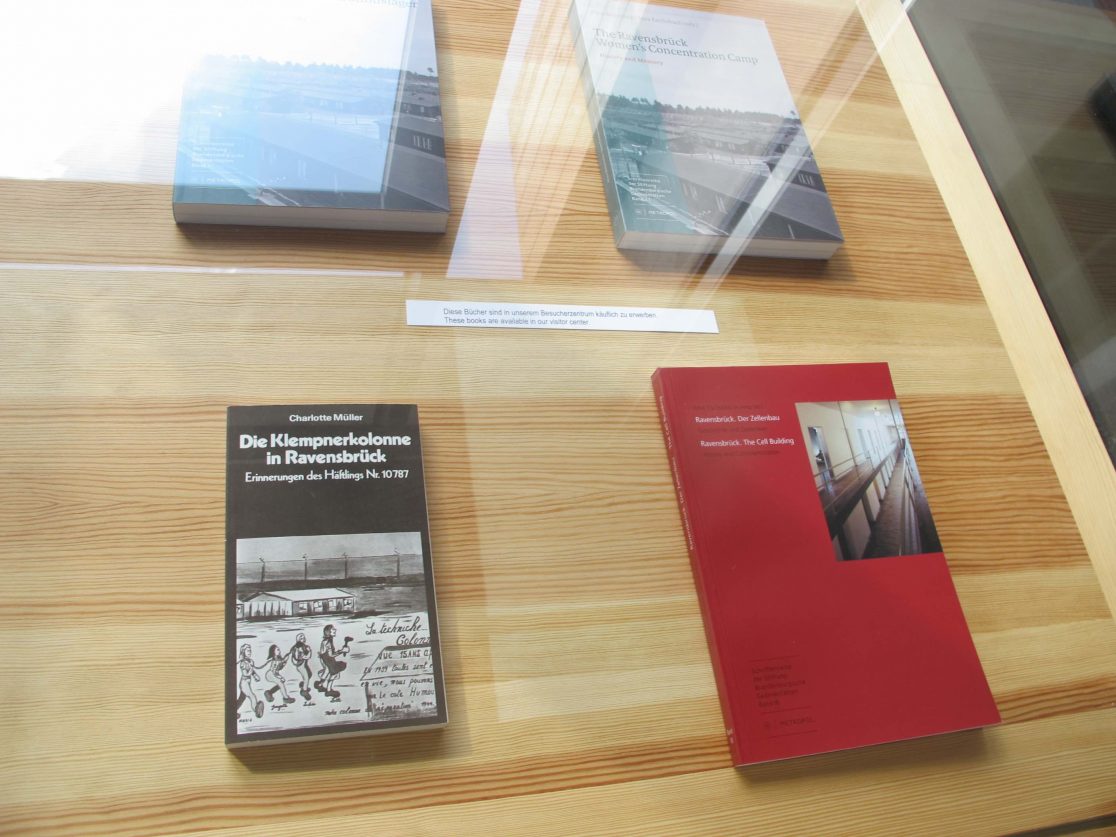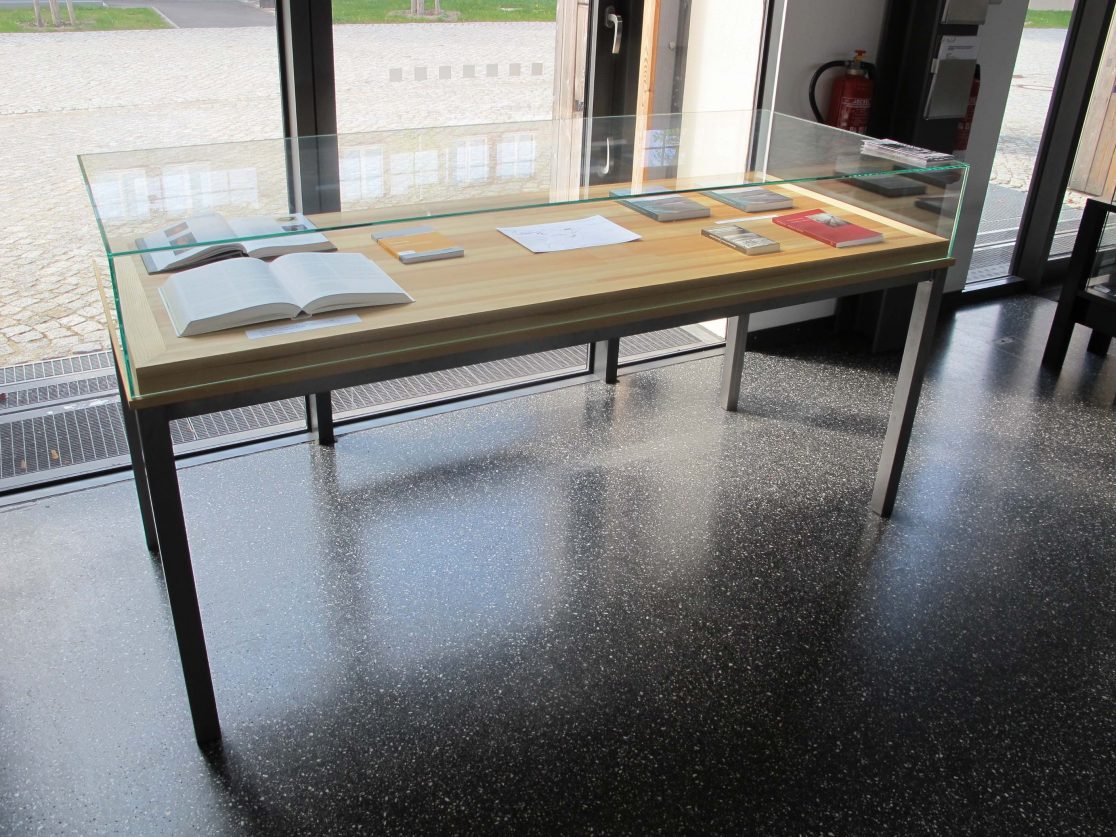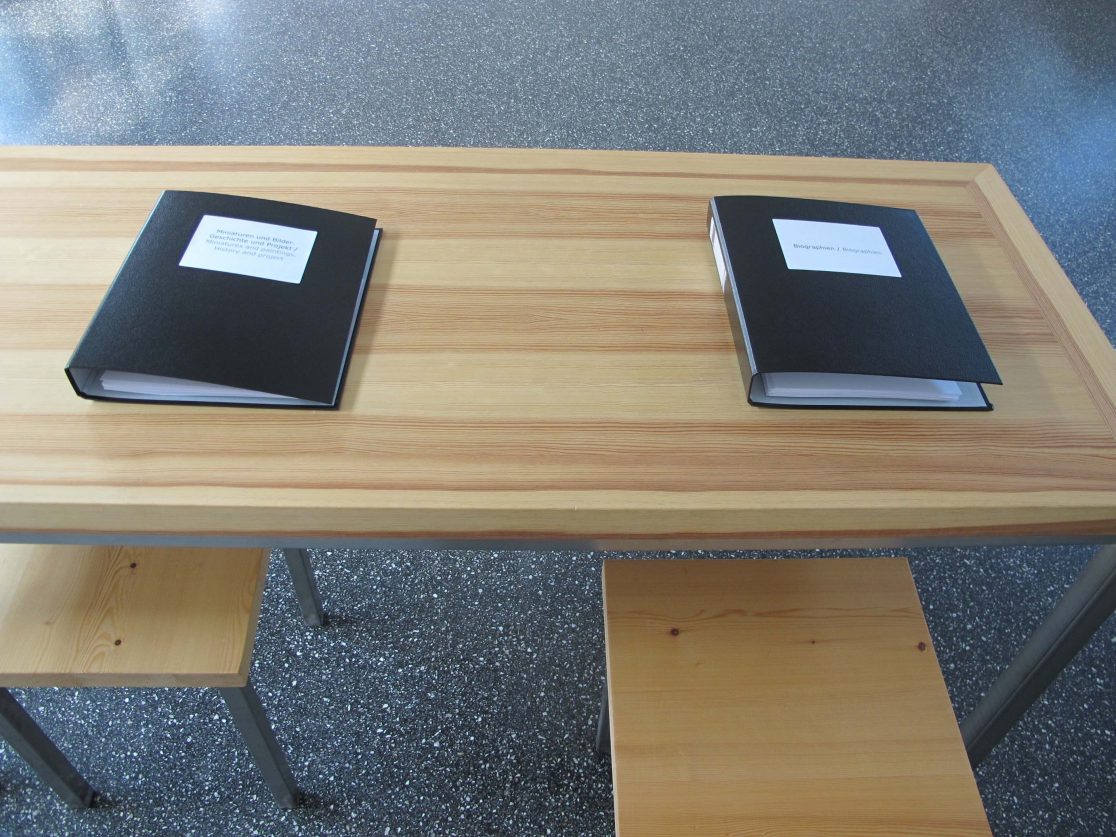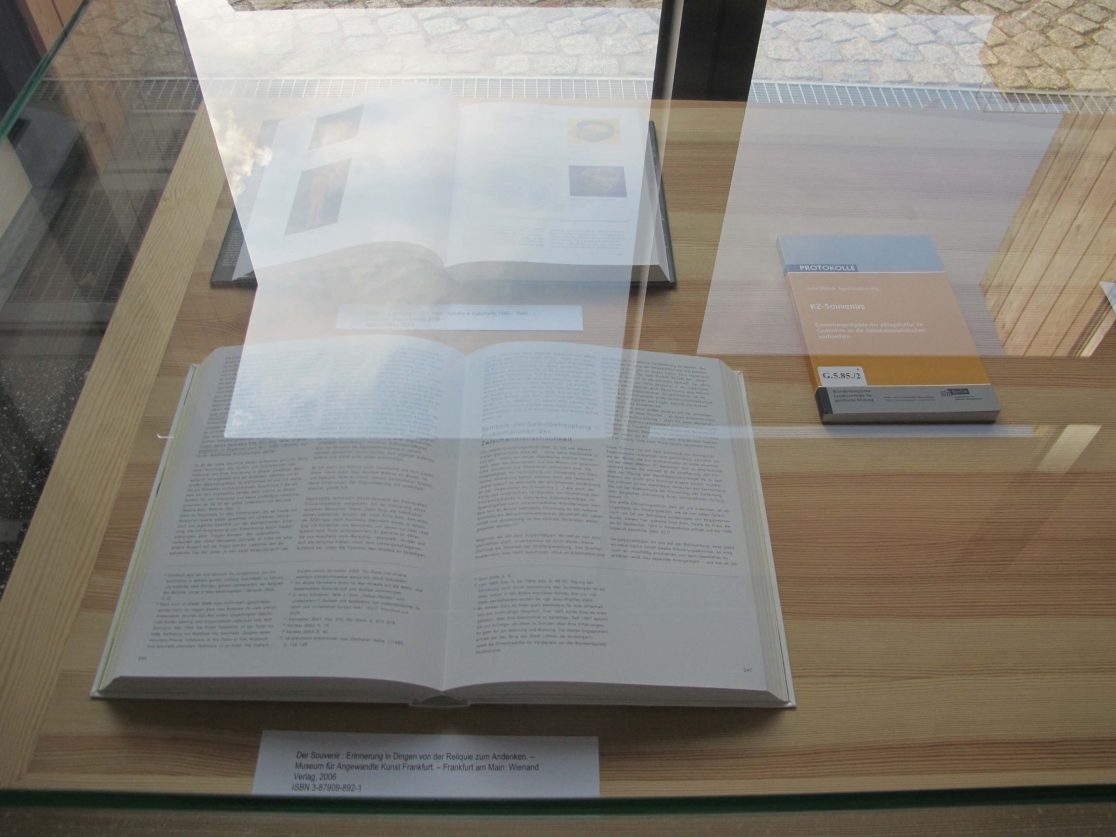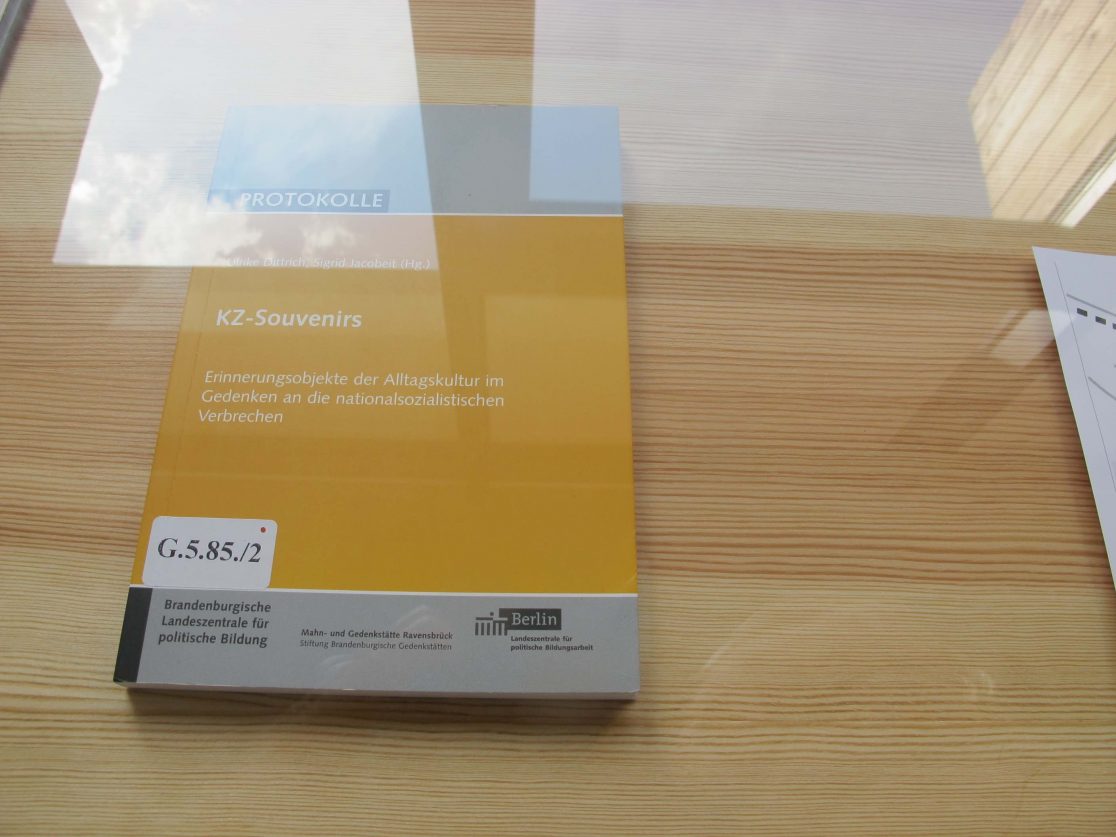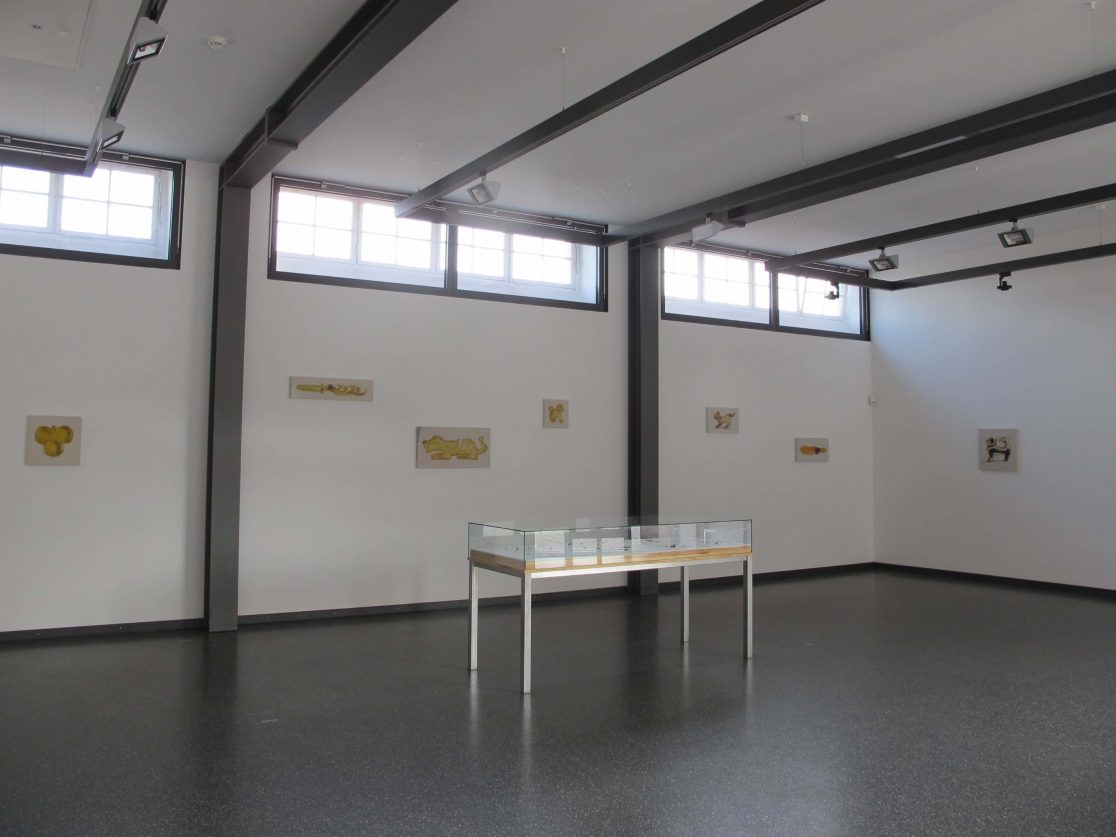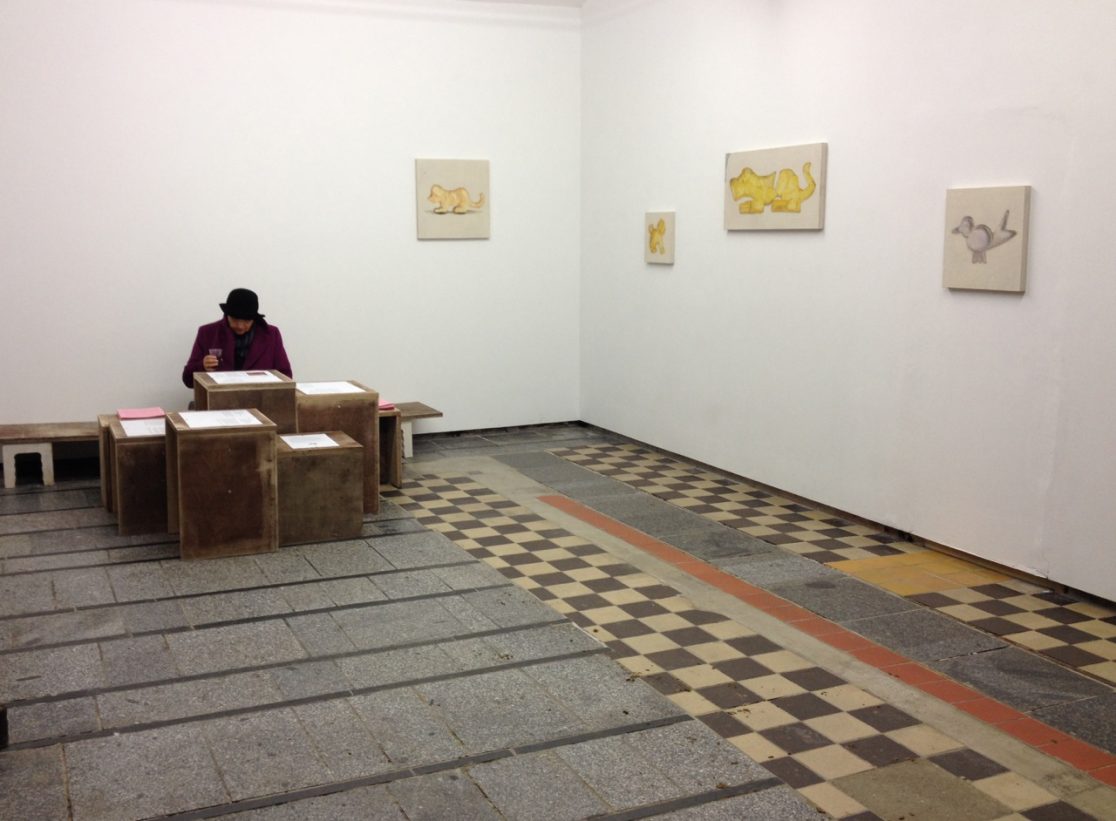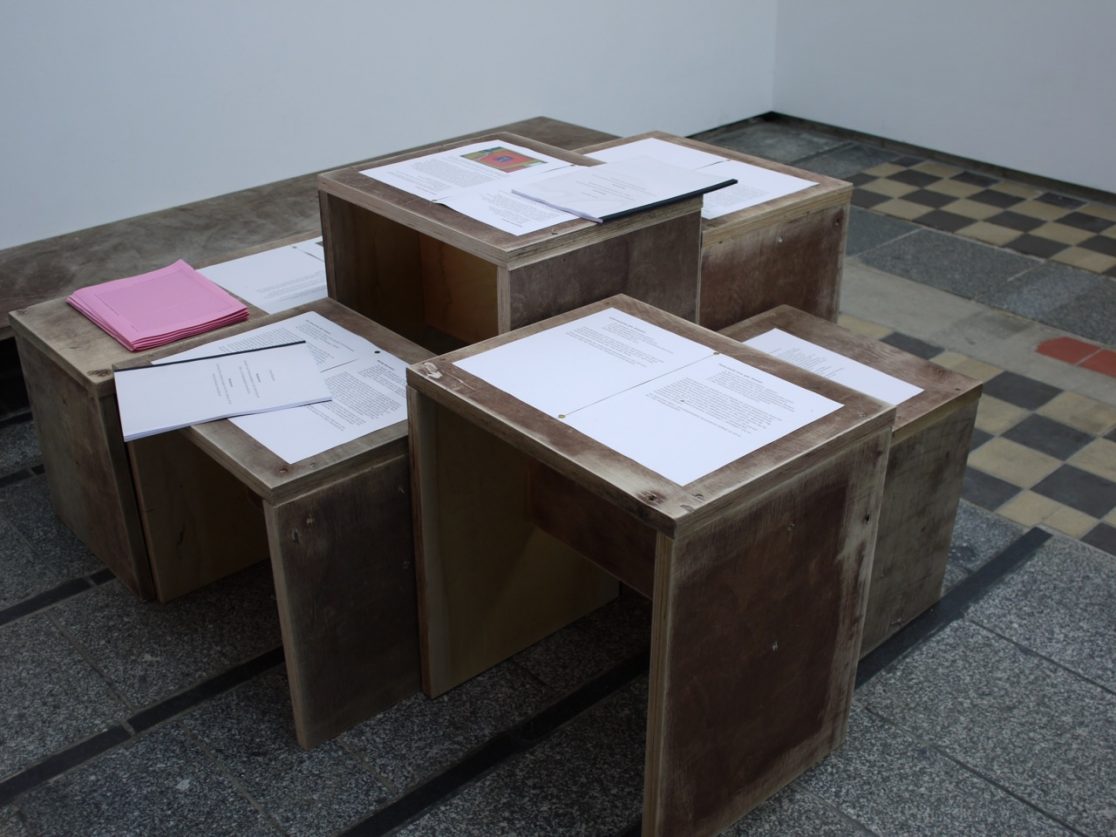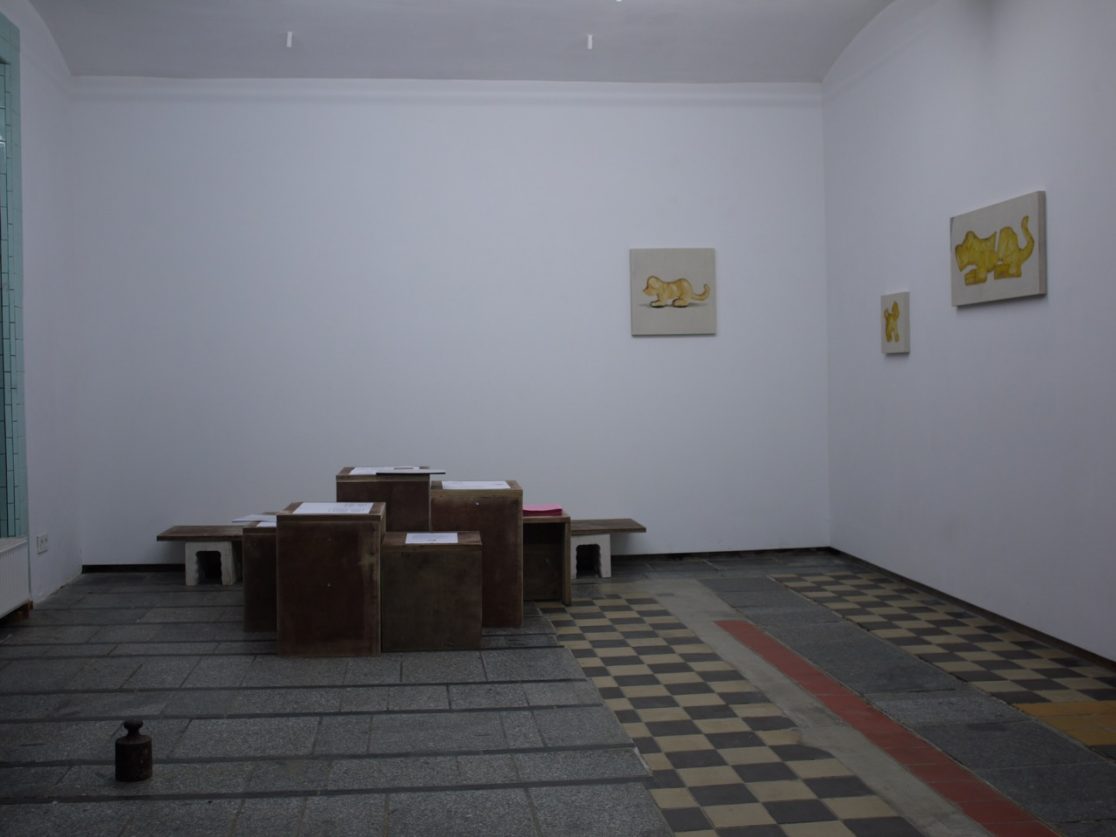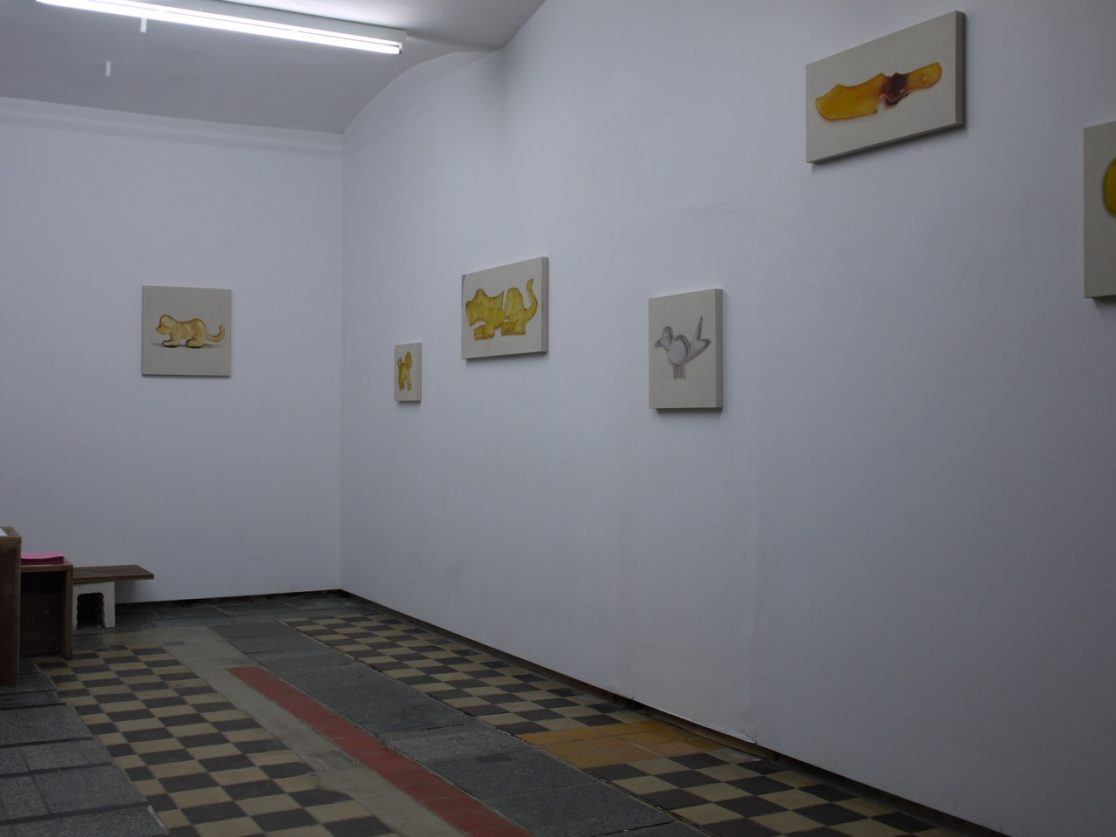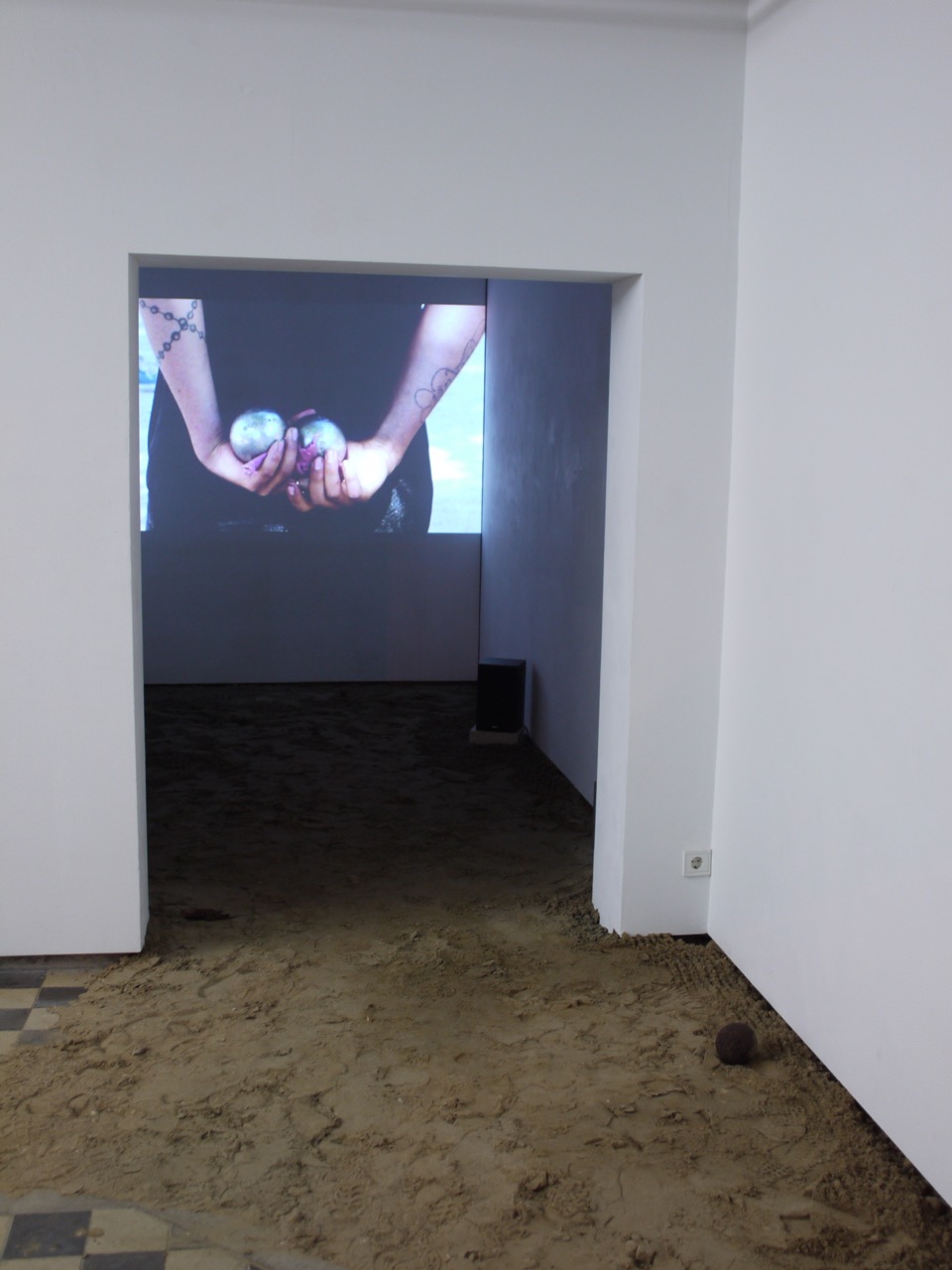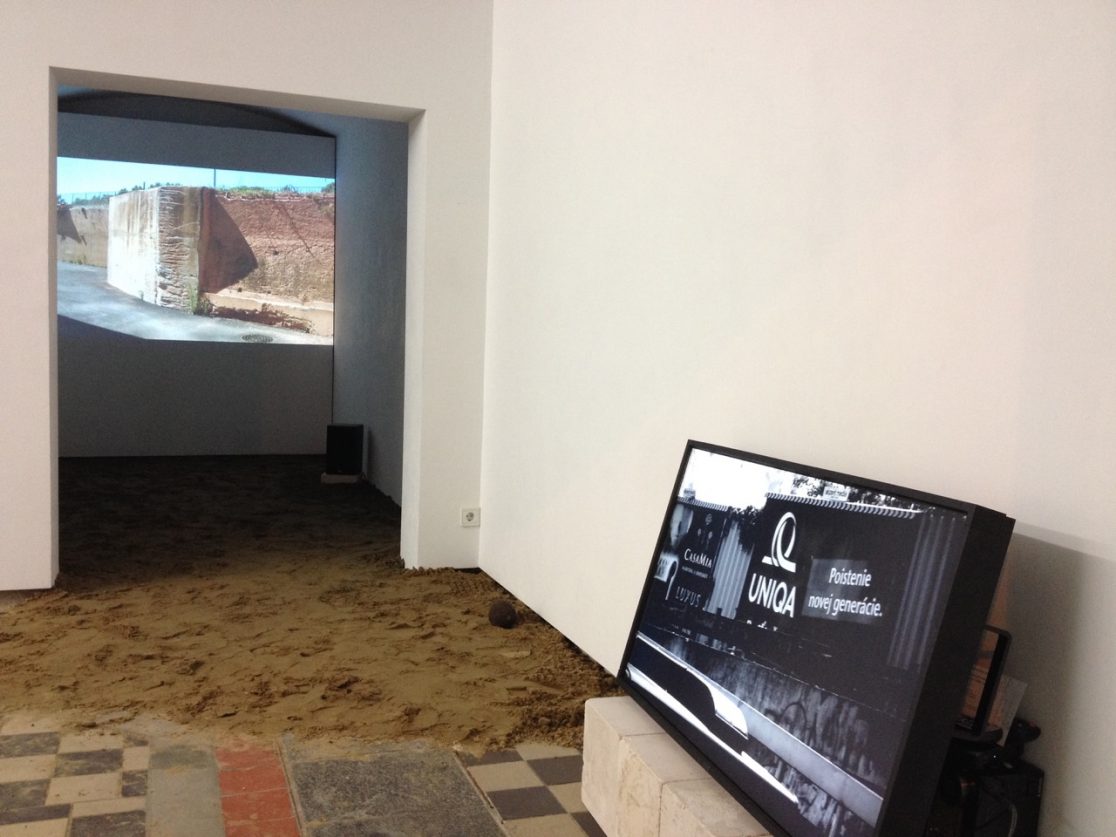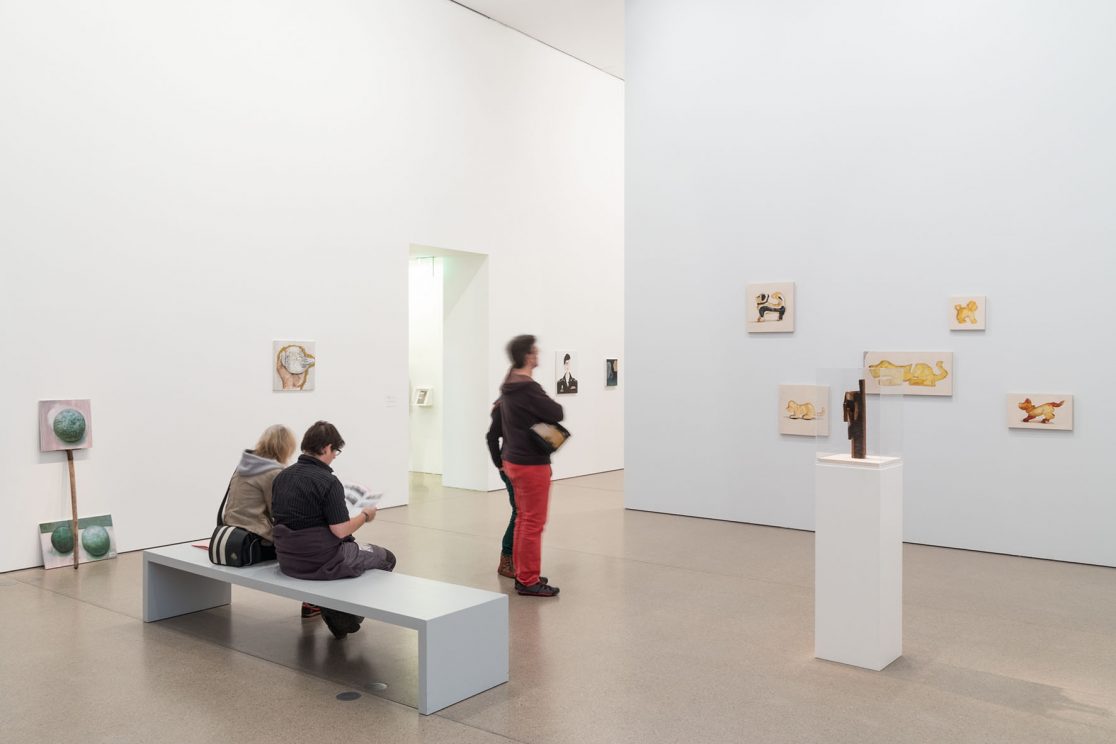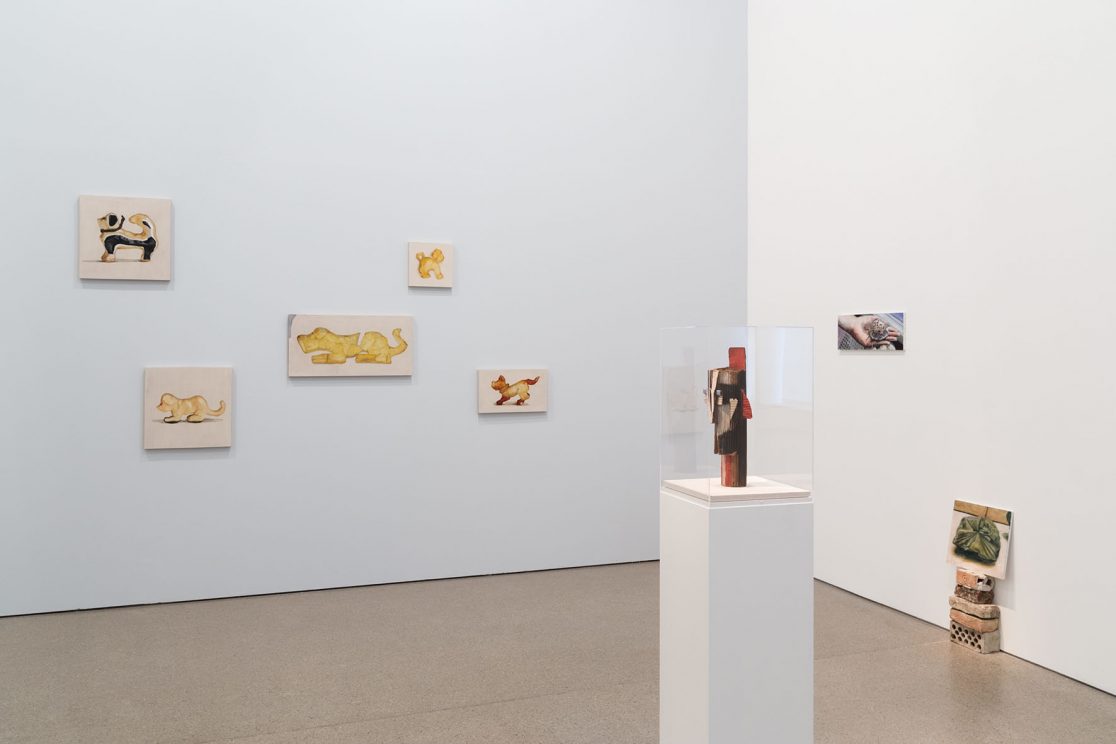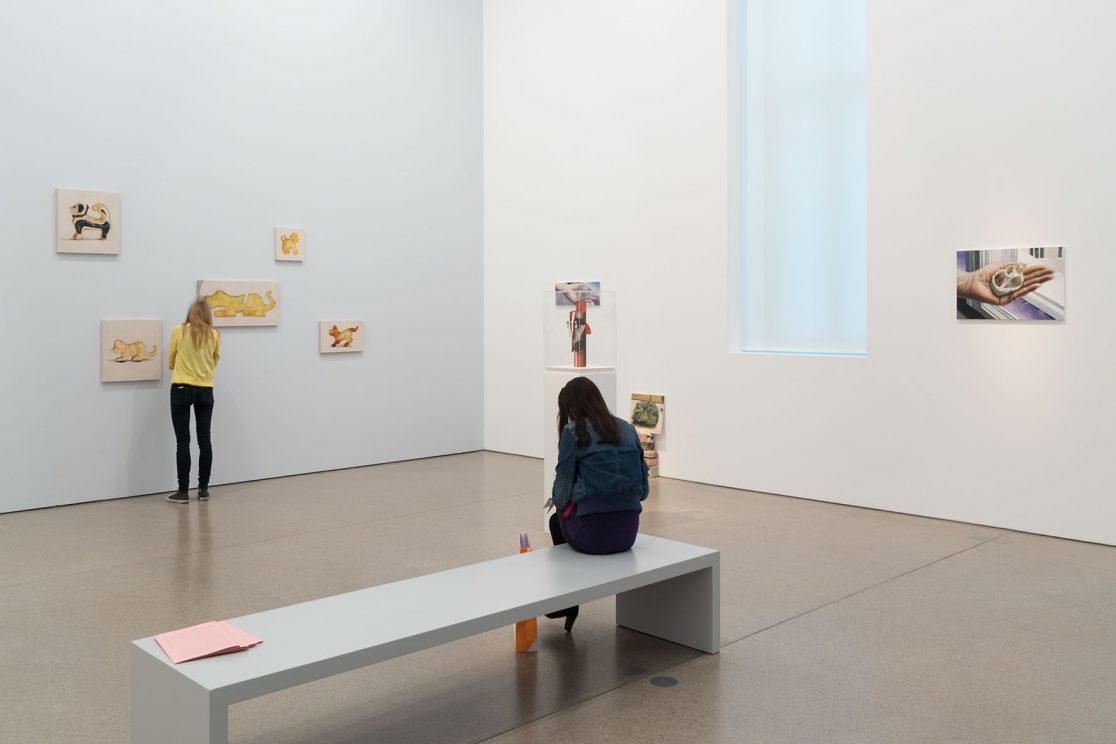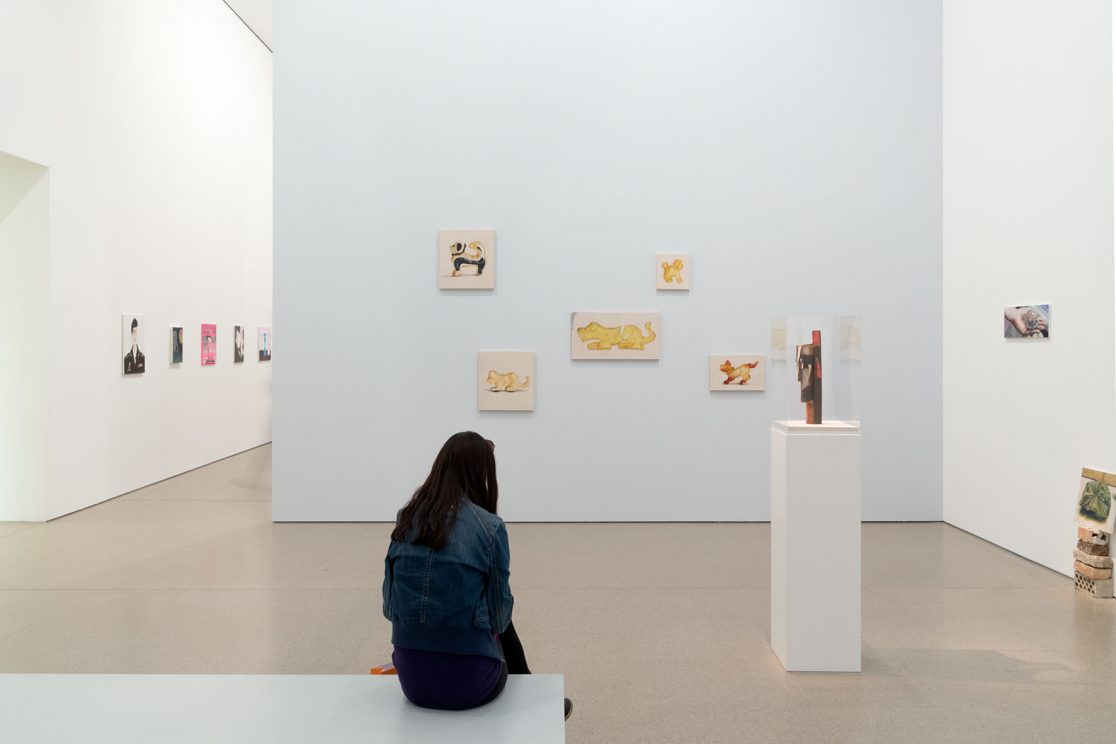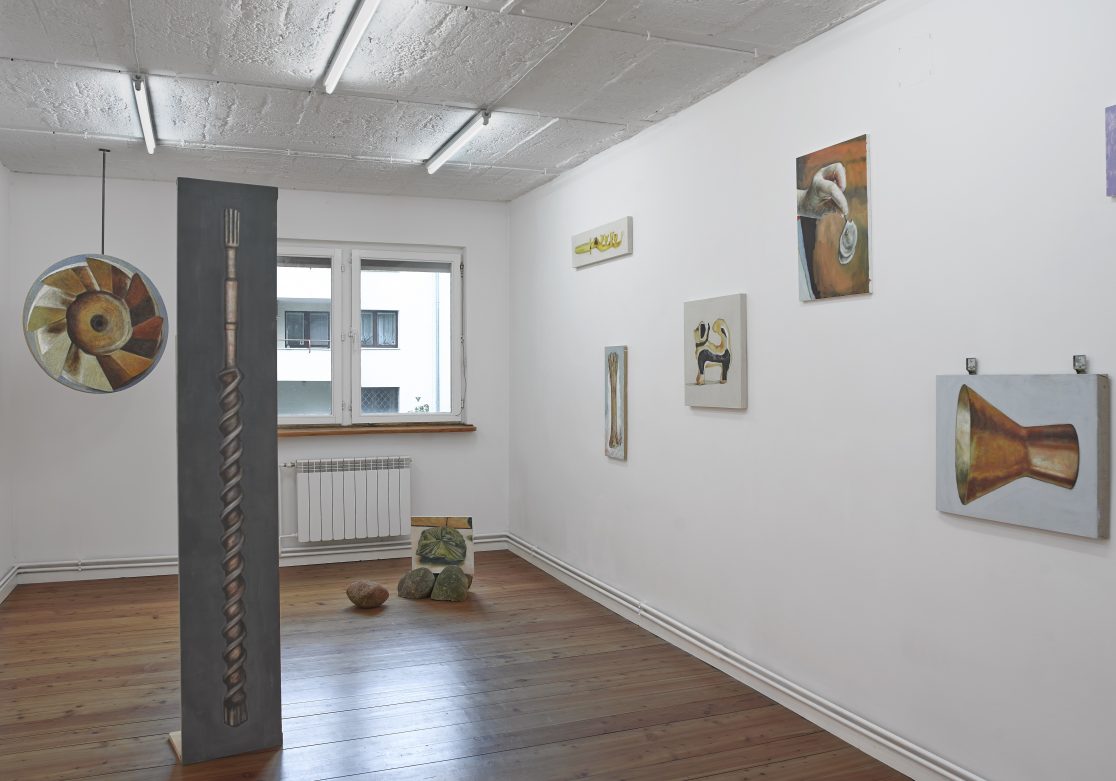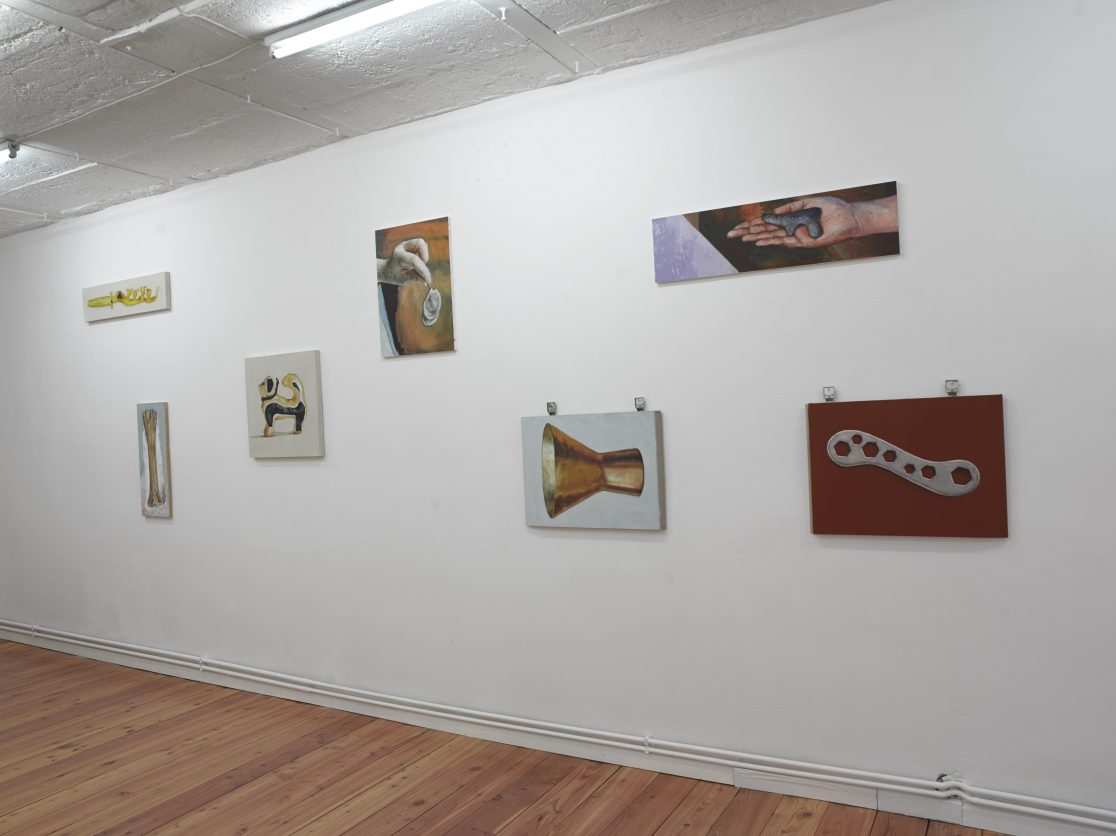Miniaturen, 2013
In recent years, Antje Majewski’s paintings and videos have questioned the social significance of objects, specifically in the context of museums. She lives and works partly in Himmelpfort, not far from the Memorial Museum Ravensbrück. In spring 2013 she noticed small objects made by the prisoners of the concentration camp for women in Ravensbrück. They were exchanged or given to other prisoners (and in rare instances, to SS guards) as gifts. Many of these objects were carved out of plastic toothbrushes. Only very few items are on display, because the plastic they are made of disintegrates and its evaporations even destroy objects nearby.
Antje Majewski decided to paint these objects in the series Miniatures. She wanted to enlarge them in order to bring them back in into visibility; at the same time, the paintings conserve the image of the objects for the time in which they themselves might have disintegrated. The series of paintings tries hereby to take part in the responsibility of the Memorial to keep the memory of the women alive that have suffered in this concentration camp. In the case the paintings are sold, they will help to finance restauration work and 3D-scans of the original objects.
Within the Memorial Museum Ravensbrück, the miniatures are presented in two different ways. In the former prison cellblock, some cells have been turned into memorial rooms by former prisoner organizations from the different countries of their origin. Here, the miniature objects become relics. The new exhibition curated by a team around the director Mrs. Insa Eschebach in the former Kommandantur building has a more sociological and didactic approach, teaching us about social relationships among the prisoners. [1]
Many of the objects show pet dogs; there are also some elephants, cats, a key, and a miniature letter opener. They may be similar to familiar objects, which these women would have made in freedom in order to give them to friends. The objects belong to a tradition of celebrating craftsmanship dating back to the times of the Wunderkammer: in miniature animals, shoes or cups; or carving hundreds of faces into a cherry pit. The luxury items in the Wunderkammer were meant for leisurely pleasure of the upper classes and most of the times they are not useful in any other sense. But it seems strange that some of the imprisoned women would spend their precious time and energy on producing such un-useable objects, made out of their toothbrushes – or even a cherry pit.
But they had a different usefulness, and a very important one. These objects often served as gifts. Having friendships inside the camp was by no means a luxury; maintaining friendships was a way to survive. The luxury of being able to make a gift, to elicit joy in another human being, helped to strengthen the ties that could become of utmost importance in the face of death. Many of the women stayed friends for life after having survived the camp.
These miniatures were also thought of as good luck charms. Some of the items were of a religious nature, mostly crosses or rosaries. But the small dogs, cats or elephants have no coded meaning.
The act of creating a form is in itself an act of freedom, especially if this form has no obvious use. In taking a knife and creating something out of their imagination, when forced to live under an extremely regulated daily routine, with almost every step watched and life spent in slave labor, this in itself must have been a moment of return to oneself, to resist being turned into a machine that could be used until it was used up. In Aby Warburg’s words, the act of creating forms created a »Distanz-Raum« (distancing room) that could help to ban fear. If the act of giving an object to a friend took place in a small ceremony: celebrating someone’s birthday, or a religious event – this was also a socially shared form created by the prisoners. These objects were tokens of freedom: the freedom to have emotions, to care for and about others, to dream of a life after the camp – and the freedom to create, to create forms of no use.
Of no use, but with a possible double meaning: A key – to open the prison. A knife to open a letter – the censored letters telling them about the world outside. Or a knife to be used as a weapon? Tiny shoes – when many prisoners had bleeding, open feet from working or standing for long hours while being counted – without shoes. A horse or a bird – to fly away, to gallop away. Pet dogs – to replace the German shepherd dogs that were trained to attack fleeing prisoners and tear their intestines out. [2]
Antje Majewski sees herself as the secondary author of the painted objects – in fact even the third author, because the objects themselves are by far too fragile to serve as models. The series of paintings is therefore based on photos taken by Dr. Cordia Schlegelmilch, generously provided by the Ravensbrück Memorial Museum. Since the original authors were the prisoners it seemed evident to Antje Majewski not to earn any money herself by selling these paintings. The gallery neugerriemschneider, by whom Antje Majewski is represented, also decided to donate their half of any possible sales. If a painting of the series of Miniatures is sold, half of the profit will be donated to the Ravensbrück Memorial Museum, and the other half to the association STAY! Düsseldorfer Flüchtlingsinitiative. Until today, two of the paintings of the series of Miniatures were sold to the art collection of the German Federal Republic, and this money was donated.
Many German citizens persecuted by the National Socialists only survived because some other countries took them in as refugees. This is one of the reasons why the right to apply for asylum is guaranteed in our constitution: any refugee who is persecuted because of political, racial, or other reasons is allowed to seek asylum in Germany. This basic right now has been negotiated to become a right linked to certain conditions. Germany has negotiated a regulation within European law, that does not allow a refugee to apply for asylum if he/ she enters from a safe third country (§ 26 a AsylVfG). The right for asylum is one of the most important rights and should apply to anyone in need of asylum who manages to reach Germany, no matter in which way. STAY! Düsseldorfer Flüchtlingsinitiative helps refugees with and without papers to deal with the authorities and have access to medical and psychological help.
Antje Majewski would like to thank Dr. Insa Eschebach, Dr. Sabine Arend and their colleagues at the Memorial Museum Ravensbrück; the gallery neugerriemschneiderfor their participation in the idea of a donation and their trust; the art collection of the Federal republic of Germany for their acquisition; and Eva Scharrer, Svenja Gräfin von Reichenbach, Kenan Darwich and Omar Nicolas for their contributions to the first exhibition of the Miniaturen in Deutsche Bank Kunsthalle, 2013.
